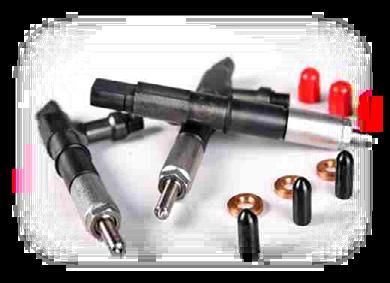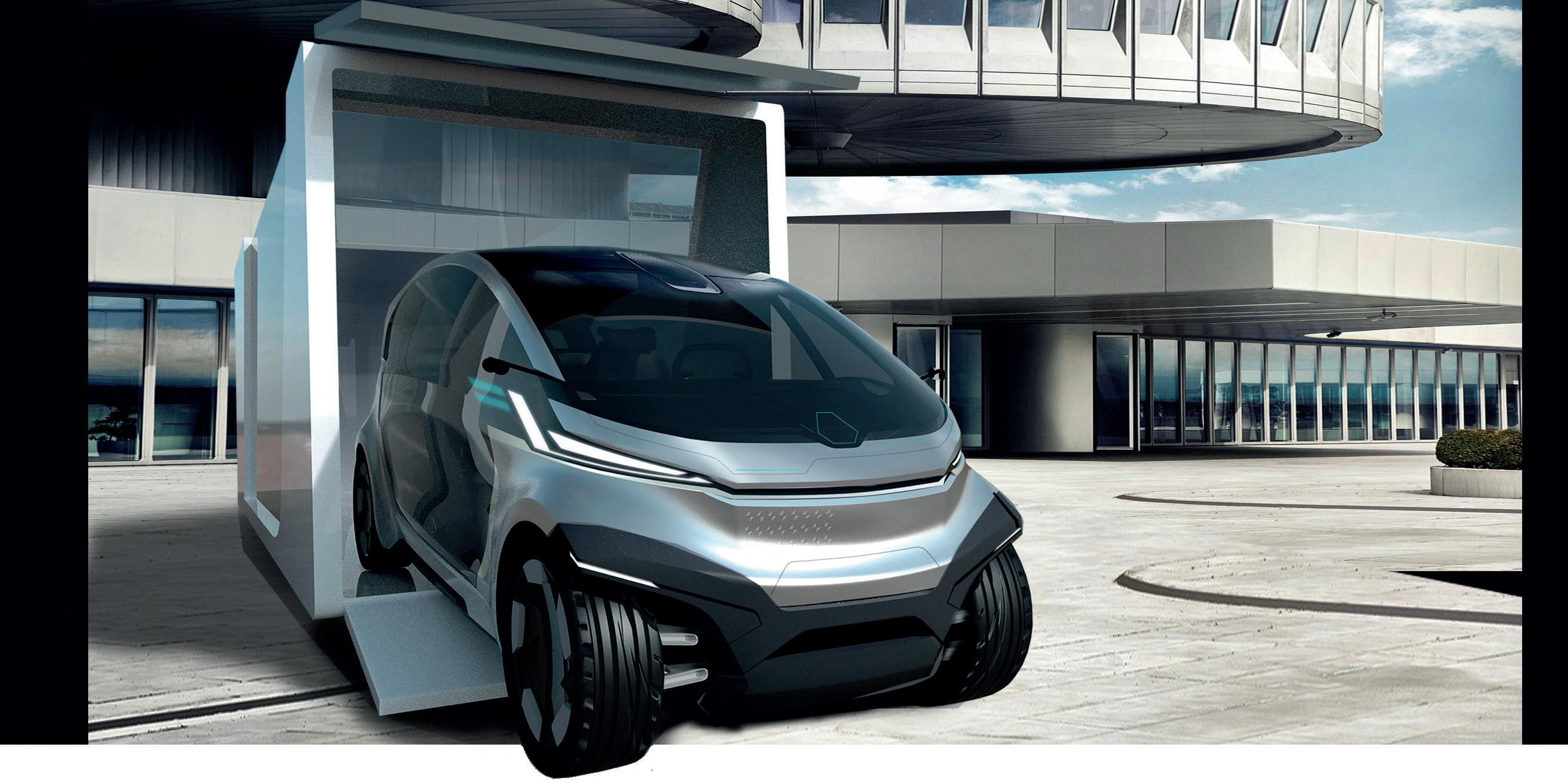

i ROBOT? YOU BET!

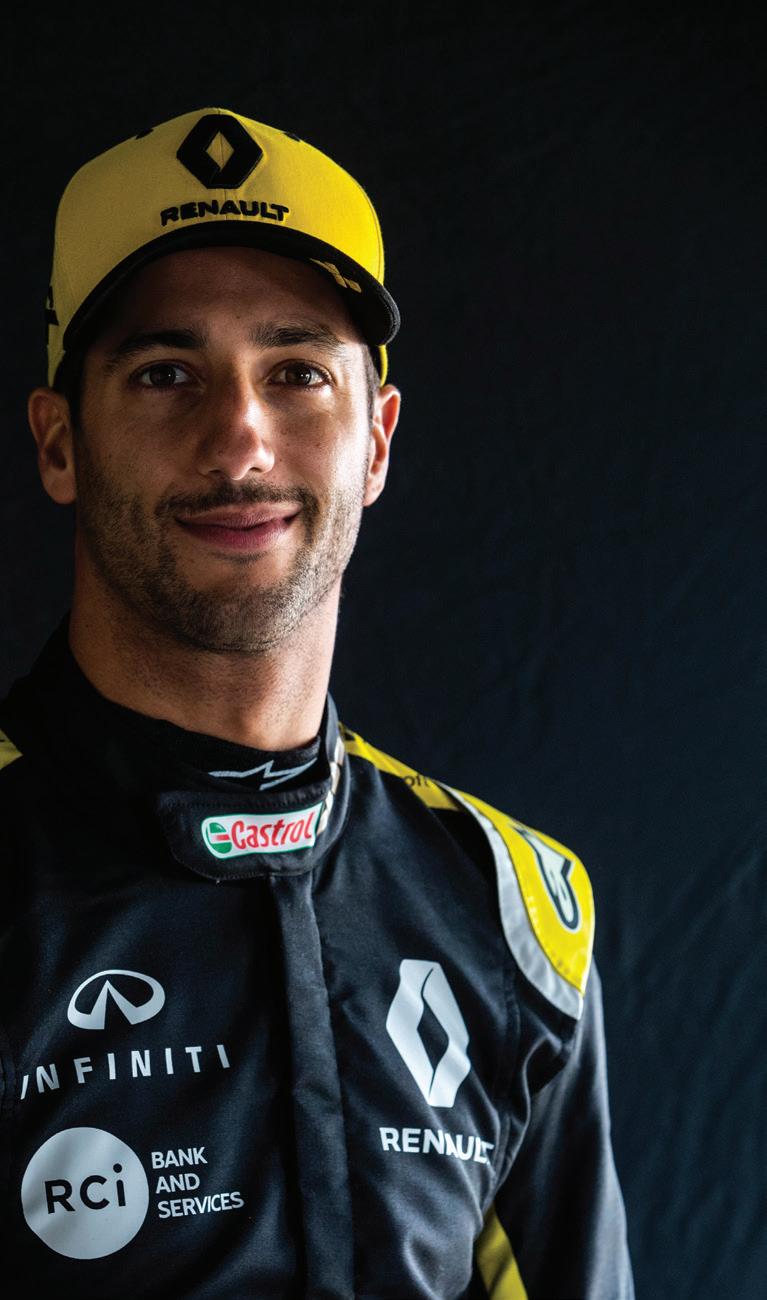
UNLOCK THE VERY EDGE OF PERFORMANCE

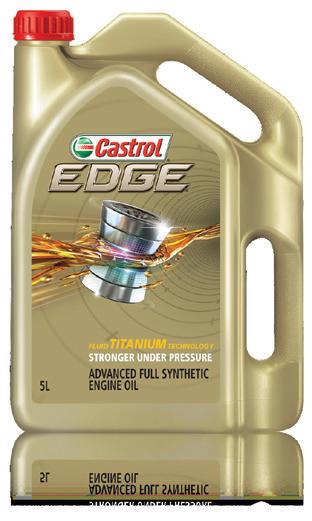



8 WELCOME REFORM
Industry bodies have welcomed franchising reforms but insist there’s still a lot of work to be done to even the playing field
10 MANAGE RISK
Guidance for the auto parts recycling industry is set to be released in the lead up to new environment protection laws
12 VACC MOTORTECH
Australia’s cutting-edge technical solution combines VACC’s suite of products with the global power and reach of Haynes
14 WOMEN’S DAY
In celebration of International Women’s Day, WinA hosted a sold-out Women in Motorsport event in Melbourne
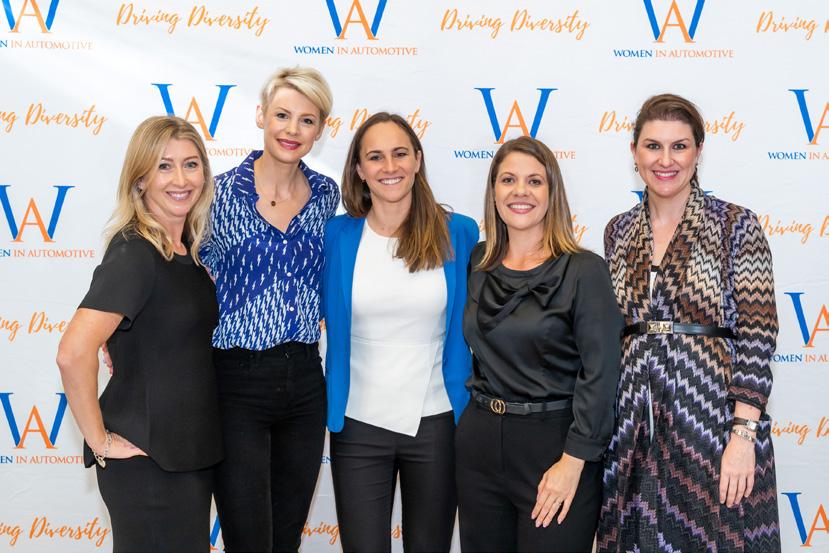

16 SKILLS MIGRATION
Any government move to downgrade automotive skills shortages will have negative impacts on industry
18 ABOLISH LCT
Australia’s post-Brexit negotiations with the UK should include the re- evaluation of unfair luxury car tax
20 TRUE GEM
Fifty-year VACC member, Bruce Parker, reflects on what he’s learned throughout his decades running HM GEM Engines
22 BIG PENALTIES
From 1 July, workplace manslaughter will result in tougher penalties for employers including 20 years’ jail for individuals

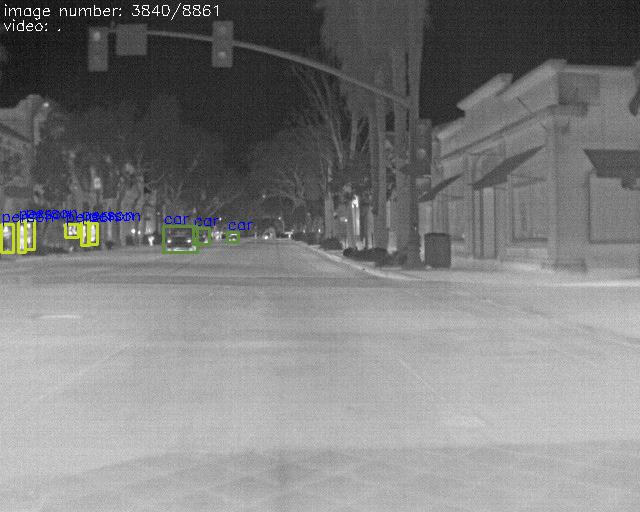
26 BIG CHAIR
Futurist Gihan Perera sits in the Big Chair and crystal balls the automotive industry
GAME CHANGER
EVs that drive themselves were once the stuff of science fiction, but Melbournebased AEV Robotics is making them a reality
38 SEEING RED

Everything gives off heat. Turns out it’s one of the best ways of working out what something is...
44 FITTING IN
When it comes to automotive electronics, demand won’t change but the form in which that demand is satisfied sure will
50 TECH TALK
A detailed look at the operation of sub-tank systems on the Toyota 120 series Prado are in focus this issue
Drive your business forward by taking advantage of the VACC alliance partner deals and assistance at your fingertips
SERVICE DIRECTORY
Find everything from the latest products to the best business services you need all in one place
We have a winner!


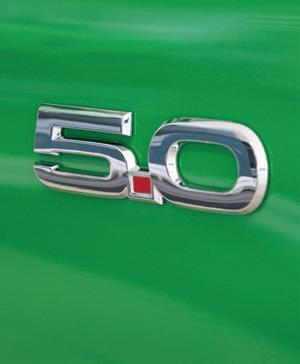
Congratulations to Jason Treleggan of Southern Collision Repairs, Seaford, South Australia on winning an awesome new Mustang GT!
A loyal customer of Maughan Thiem Ford in Adelaide, Jason is the lucky winner of the ‘2019 Ford Trade Club Win A Ford Mustang GT’ promotion.
Jason received his prize from Ford Australia representatives accompanied by a team from Maughan Thiem Ford, and was gobsmacked when he was handed the keys to his new vehicle.
“When the team from Ford visited the site, my first thought was that it seemed a bit of an overkill for a routine visit to a relatively small business. When they told me I had won the Mustang, I just couldn’t believe it.
“For a small repairer in South Australia to win a national competition is just amazing. I’m very grateful to Ford for running such a great competition and to Maughan Thiem Ford for hosting the presentation,” he said afterwards.
We wish Jason lots of happy miles in his hot new wheels!
The competition was open exclusively to members of Ford Trade Club. Not a member? Visit fordtradeclub.com.au and contact your local Ford Trade Club Dealer for details today, and you could be our next big winner.

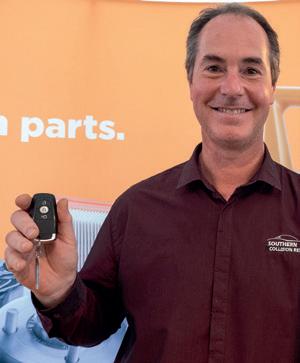



OUR CHALLENGING SUMMER
THERE’S no doubt that many people in Australia have been doing it tough recently. We’ve entered 23 straight months of negative growth in new-car sales; and the coronavirus is affecting the travel and tourism industries heavily.
But the big one this summer has of course been the bushfires that raged right across the country, with New South Wales, Canberra, Victoria and South Australia particularly affected.
Motor Trades Associations across Australia were active in supporting their members during this difficult time and we here at VACC are proud to have played our part. VACC kicked into gear early on, providing vital information and connections to support services, and by offering practical and financial assistance where necessary. Spearheading this campaign was VACC President, Fury Bortolotto who spent time on the road visiting affected members in South Gippsland, an area that endured a protracted bushfire threat lasting several months. What he witnessed and reported back was typical of the situation in this badly affected region. Members reported to President Bortolotto that they, their families and staff were safe, and their businesses were still standing. But an unexpected consequence of the fires – at least for someone like me living safe and sound in the capital city of Melbourne is concerned – was that their customers – and in some instances, their staff – necessarily

had to leave town. This meant that there was no work, no cashflow, mounting bills to shell out – and no one left to pay their business for work already performed.
The immediate threat of fire has now subsided. But while concerns remain, there is help at hand. Automotive business owners affected by the fires are not alone. They can access support through the following:
The Australian Chamber of Commerce and Industry has launched a ‘one-stopshop’ portal which provides easy access to information about government funding and grants, financial advice, insurance, tax relief, health and safety precautions and mental health support. Visit: bushfireinfo.business Grants of up to $50,000 are available to eligible Victorian small businesses affected by the bushfires. These grants are intended
to help pay for costs of clean-up and reinstatement of eligible small businesses that have suffered direct damage as a result of bushfires. To access, visit: business. vic.gov.au/support-for-your-business
So what can you and I do to assist?
The best and most immediate way to help is to get out and about in regional areas. Visit affected towns; spend some cash. And if you owe a regional business money for work performed on your vehicle or for some parts or supplies, pay them. Or give them more work. That’s what they need.
Most importantly, if you know someone who lived through the threat of the terrible summer fires, get in touch and check on their health and safety. They need that more than anything.
David Dowsey

MANAGING EDITOR
David Dowsey 03 9829 1247
editor@australianautomotive.com
SUB-EDITOR
Pia-Therese Hams
DESIGNERS
Faith Perrett, Gavin van Langenberg 03 9829 1159
creative@australianautomotive.com
CONTRIBUTORS
Steve Bletsos, Ged Bulmer, John Caine, Rod Lofts, Isabella Mizzi, Paul Tuzson

VACC adheres to its obligations under National Privacy Principles legislation. Information on products and services contained in the editorial and advertising pages of this magazine does not imply the endorsement of any product or service by VACC. Australian Automotive is copyright and no part may be reproduced without the written permission of VACC. Advertisers and advertising agencies lodging material for publication in Australian Automotive indemnify the VACC, its directors, Board, employees, members, and its agents against all claims and any other liability whatsoever wholly or partially arising from the publication of the material, and without limiting the generality of the foregoing, indemnify each of them in relation to defamation, libel, slander of title, infringement of copyright, infringement of trademarks or names of publication titles, unfair competition, breach of trade practices or fair trading legislation, violation of rights of privacy or confidential information or licences or royalty rights or other intellectual property rights, and warrant that the material complies with all relevant laws and regulations. This publication is distributed with the understanding that the authors, editors and publishers are not responsible for the results of any actions or works of whatsoever kind based on the information contained in this publication, nor for any errors or omissions contained herein. The publishers, authors and editors expressly disclaim all and any liability to any person whomsoever whether a purchaser of this publication or not in respect of anything and of the consequences of anything done or omitted to be done by any such person in reliance, whether whole or partial upon the whole or any part of the contents of this publication. Advertising accepted for publication in Australian Automotive is subject to the conditions set out in the Australian Automotive rate card, available from editor@australianautomotive.com
Connect with VACC

















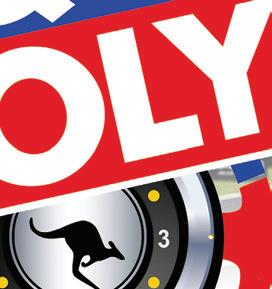




















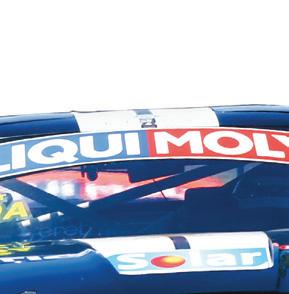
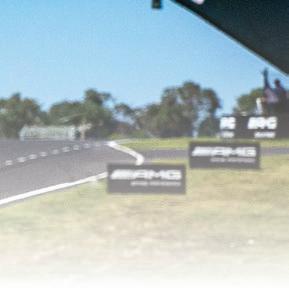










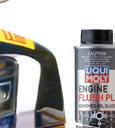
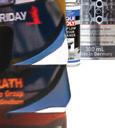


LIQUI MOLY Family Worldwide
MADE IN GERMANY
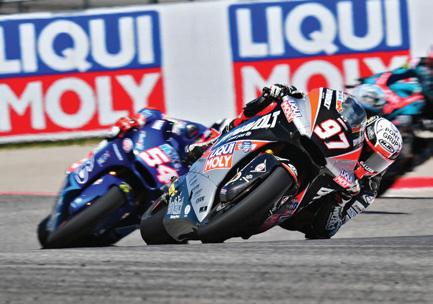
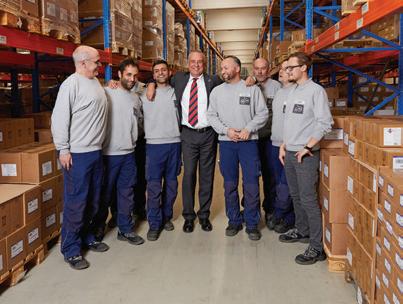

Industry welcomes franchising reforms
THE Victorian Automobile Chamber of Commerce’s national body, the Motor Trades Association of Australia (MTAA), has welcomed reforms announced by the Commonwealth Government to address a power imbalance between car manufacturers and new car dealers – a move that will better protect automotive small businesses and consumers.
The reforms, released by Minister for Industry, Science and Technology, Karen Andrews and Minister for Employment, Skills, Small and Family Business, Michaelia Cash, will see the introduction of specific regulations as part of a revitalised Franchising Code of Conduct with a penalty regime for breaches.
MTAA CEO, Richard Dudley said the regulations released for final consultation are significant and will go a long way to addressing significant problems experienced by new car retailing franchisees in the areas of capital expenditure requirements, adequate time to secure returns on substantial investments, better clarity and protections for end of
franchise obligations and improved resolution mechanisms for disputes.
“These are long-standing issues and MTAA and state and territory Motor Trades Associations and Automobile Chambers of Commerce members are pleased government has agreed to our call for a specific automotive retail schedule to the Franchising Code of Conduct to address them.
“This regulatory response follows continuous representations on behalf of new car retailers for more than a decade, including input into reviews of the Franchising Code and the Australian Consumer Law. More recently we and new car, motorcycle, and farm and industrial machinery dealers have provided significant input into the Australian Competition and Consumer Commission new car retailing market study and a Joint Parliamentary Committee investigation into Franchising,” Dudley stated.
Dudley went on to declare that the government’s decision to strengthen the Franchising Code of Conduct, recognise automotive retailing with a
specific schedule, and include a penalty regime for breaches, vindicates the federation and member arguments over the impacts of a significant power imbalance between some car manufacturers and dealers.
Work is still to be done however, MTAA expressing its disappointment that the motorcycle and farm and industrial machinery retail franchisees are not yet included in the Franchising Code automotive schedule.
“MTAA understands that the almost identical concerns of our motorcycle and farm and industrial machinery retailers have been recognised and we have been assured these industries’ concerns will be addressed following an early review of these regulations,” said Dudley.


Consumer warranties and ACL
WORDS John Caine
A question asked frequently of VACC is:
Do I have to give a written warranty period on goods I sell and or services I provide?
The simple answer is no. However, as suppliers of goods and services to consumers all businesses are bound by the Australian Consumer Law which came into force on the 1 January 2011.
A consumer is a person, or business, who purchases any type of goods or services costing up to $40,000 or greater if it is a vehicle.
This law requires that a seller guarantees that goods and services will be of acceptable quality and also match any given description. Increasingly, a customer will query what warranty/guarantee period comes with a particular part or service.
A business may choose to pass on the supplier's, manufacturer’s, or even their own written warranty against defects
and specify a period for this to remain in force. This is called a ‘voluntary’ or ‘express warranty’. If this is done then the law requires that it must meet a number of requirements, including that it contains the following mandatory text:
“Our goods come with guarantees that cannot be excluded under the Australian Consumer Law. You are entitled to a replacement or refund for a major failure and compensation for any other reasonably foreseeable loss or damage. You are also entitled to have the goods repaired or replaced if the goods fail to be of acceptable quality and the failure does not amount to a major failure.”
But what is acceptable quality?
It’s largely whether a reasonable consumer would find that the goods or services achieved the desired result, were carried out with due care and skill and met any promises as to outcomes made by the supplier. For example, a four-wheel drive purchased for a family holiday should not break down in the first week or a reconditioned changeover
transmission fail within a short period.
As for matching description, any statement as to engine type or capacity, 4WD, AWD or 2WD, particular brand or country of origin, for example, must be correct otherwise failure to comply with a consumer guarantee will have occurred.
A consumer may be entitled to a remedy under the consumer guarantees after a warranty against defects period has expired. No set timeframes apply to the consumer guarantees.
How long they apply depends entirely on the nature of the good or service in question.
Another query relates to what rights the business has if the consumer gets repairs done elsewhere to a vehicle you sold without your knowledge or authority.
It’s generally accepted that if you sell a good/service or vehicle and a fault develops, then the consumer must give you reasonable opportunity to meet any obligations you have under a consumer guarantee or statutory warranty.


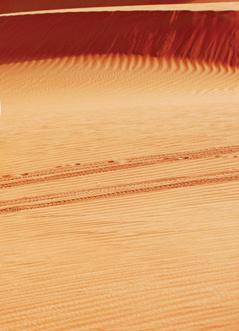
The Bendix Ultimate 4WD Brake Upgrade Kit with advanced brake pads and rotors, braided lines and a host of ancillary items is the ultimate brake upgrade for the latest 4WD vehicles such as Ranger and Hilux.
Contents
2 × Ultimate Brake Rotors
1 × Set of Ultimate 4WD Brake Pads
1 × Vehicle Set Ultimate Brake Hose
1L Heavy Duty Brake Fluid
1 × Can Bendix Cleanup
1 × Tube Ceramasil Brake Parts Lubricant
1 × HD touring case
Installation details
ULTIMATE 4WD BRAKE PADS
FEATURES: BENEFITS:

This comprehensive kit includes specially compounded high performance CERAMIC material brake pads for increased stopping power in extreme conditions plus the latest Bendix Ultimate Rotors designed and developed specifically for Australia’s demanding conditions.
Ceramic Material Low Dust, Low Noise, while providing high temperature stability and excellent fade resistance
Mechanical retention system
backing plate MRS technology used in commercial vehicle brake pads, for improved pad attachment strength, for heavy duty operating conditions
Designed for Slotted Rotors Works best with slotted rotors, delivers confident stopping in all conditions
ULTIMATE 4WD ROTORS
FEATURES: BENEFITS:
Diamond Tip Slot Allows gasses to escape in heavy duty driving, delivering consistent output
Better self cleaning for off road conditions
High Carbon Metallurgy Noise damping, thermal conductivity, improved durability and increases brake performance & stopping power
SwiftFit Protective zinc coating which is ready to fit
Pillar Construction
Improved thermal stability
ULTIMATE BRAKE HOSE
FEATURES: BENEFITS:
Braided line with protection sleeve
Meets SAE J1401
Delivers a firm brake pedal, that won’t over expand under high pressure
Compliant to international design standards, won’t affect warranty
Designed to fit Fits your application without any modification
Helping manage risk to the environment
NEW environment protection laws come into effect from 1 July 2020. Central to the new laws is that anyone engaging in an activity that could harm human health and the environment, from pollution or waste, must manage that risk. This general environmental duty is new and applies to all Victorians.
Environment Protection Authority Victoria (EPA) is working with industry to develop a suite of new and updated guidance, so business owners know what the new laws will mean for them.
New guidance for the autoparts recycling industry has been developed and co-branded with the Victorian Automobile Chamber of Commerce to help owners comply with the new laws. Soon to be released, the auto recyclers guideline will help to identify hazards from business activities that could cause harm. It also takes readers through some reasonable steps to take to eliminate or reduce the risk of harm to human health and the environment.
The new guideline outlines EPA’s expectations of businesses that recycle parts from cars, trucks, motorcycles, farm machinery or other industrial vehicles in complying with environment protection laws. Keep a look out for the new guideline once released, along with other guidance that could help prevent harm to human health and the environment, on the EPA website.
Other useful EPA website guidance includes:
Assessing and controlling risk – introduces a four-step risk management process to assess and control hazards. Assessing and controlling risk in a structured way will help owners prevent harm to human health and the environment, comply with legal obligations and meet community expectations.
• Liquid storage and handling –identifies some control options to help appropriately store and handle
liquids, and respond to incidents like spills. Any businesses that store or handle liquids can use this guidance. It covers bulk storage and smaller containers or packaged storage of raw materials, product and waste liquids.
Solid storage and handling – can be used with the liquid storage and handling guidance to manage risks associated with industrial solids like powder, granules and pellets.
To contact EPA, visit epa.vic.gov. au or call 1300 372 842 (1300 EPA VIC)


The Bullbar Assist provides a safe and effective method for removing and installing bull bars, using less man power, therefore increasing work productivity.


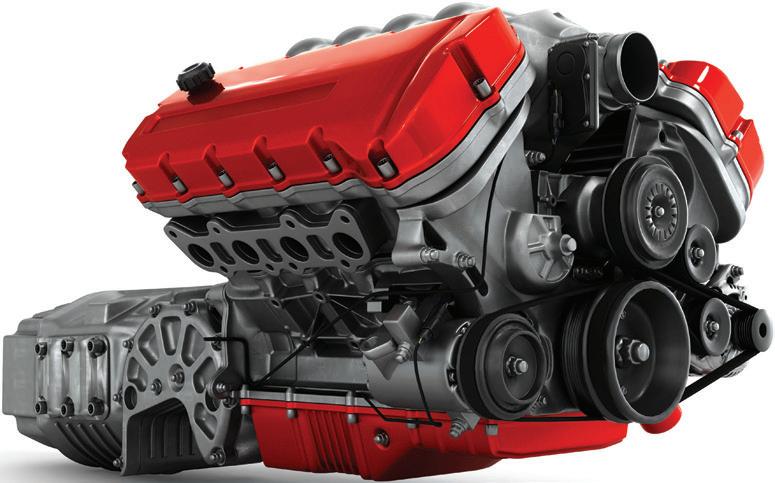

VACC Technical has changed...
VACC Technical Services has launched into a new era of product offerings that will change the automotive technical information game in Australia.
VACC has signed a multi-year deal with the famous British-based Haynes Publishing Group, bringing to market a suite of products, unsurpassed in Australia, under the banner of VACC MotorTech.
VACC MotorTech brings together VACC’s proven Tech Online, Times Guide, Tech Estimate, Tech Advisory Service and Tech Talk products with the might of Haynes’ international know-how, to provide an enormous (and evergrowing) amount of technical service and repair information to subscribers.
Available now for subscription are three ‘bundles’: Diagnostics, Service & Repair, and Maintenance. These new products are positioned at an unbeatable price and VACC members receive generous discounts of up to 50 percent.
Haynes is best known in Australia for its Haynes manuals that have been in print since 1965 and have sold over 200 million copies worldwide. However, they
online products, designed for automotive professionals under the HaynesPro brand.
Until the agreement with VACC, HaynesPro products have not been available in the Australian market in such affordable and convenient packages.
The HaynesPro products include:
• HaynesPro Manuals AllAccess Cars allows access to all Haynes manuals online, providing step-by-step repair and service information, along with extra details not published in the hard copy versions. The Haynes OnDemand video tutorials – available for many of the most popular models – are the ultimate aid to getting vehicles correctly serviced and repaired.
• HaynesPro WorkshopData Tech contains extensive maintenance information like repair times, timing belt and chain replacement procedures, capacities, wheel alignment, torque specification and over 100,000 high-quality technical drawings.
• HaynesPro WorkshopData Electronics and Smart includes the VESA guided diagnostics system, wiring diagrams for most vehicle systems, fuse and relay locations, earth point and control unit locations, TSBs and known fixes.
The agreement between VACC and Haynes provides automotive business owners new options and easy access to repair information and vehicle repair times not available previously, in bundles to suit every business’s needs.
Visit: motortech.com.au to learn more.


Mandatory data sharing law update
RECENTLY, VACC facilitated a high-level meeting which included MTAA CEO Richard Dudley, AAAA representatives Stuart Charity and Lesley Yates, Donny Seyfer CEO of the National Automotive Service Task Force (NASTF) in America and NASTF board member, Aaron Lowe. The purpose of the meeting was to formalise agreements and progress work towards the implementation of a secure data release model (SDRM) purposely built for Australia. This work is undertaken in conjunction with Treasury’s drafting of the service and repair information sharing law.
VACC can report that NASTF has been in constant dialogue with VACC over the last three years and is very supportive of the right to repair movement here in Australia.
VACC can also confirm that automakers such as General Motors will be providing VACC with a letter of support, which will be shared with Michael Sukkar the Minister responsible for the proposed legislation.
The Holden announcement is another important reason why the provision of OEM service and repair information is good policy.

With 1.6 million Holden vehicles on Australian roads the servicing and repairing of these vehicles will be left to the authorised service providers that are left but most will likely be taken to a local independent service centre.
“VACC/MTAA have had a great working
relationship with NASTF, resulting in talks to introduce a Secure Data Release Model – a system designed for vetting and registering automotive security professionals – here in Australia. There is no need to reinvent the wheel,” said VACC CEO, Geoff Gwilym.
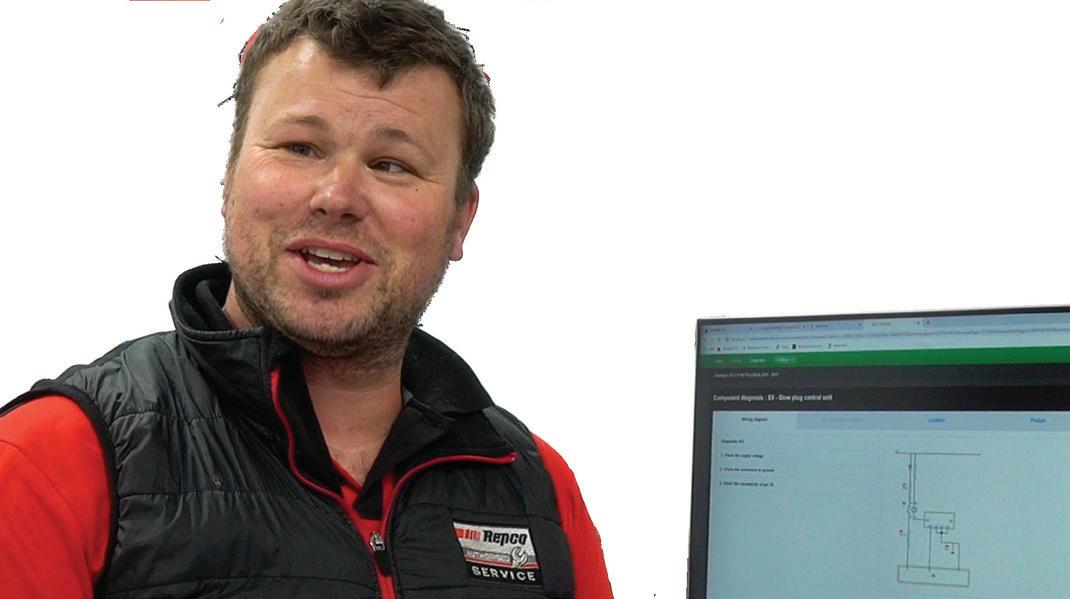
“I’ve
Morning of motoring
Words Isabella Mizzi
EACH year, International Women’s Day (IWD) serves to remind everyone of the necessity for a gender balanced society – and in particular – gender balanced workplaces. While the automotive industry still has a long way to go before achieving this balance, groups like VACC’s own Women in Automotive (WinA) are actively seeking to initiate this change.
One of the ways WinA strives to ensure gender parity in the automotive industry is through hosting events such as this year’s Women in Automotive International Women’s Day Breakfast.
This year’s WinA IWD event featured a motorsport theme, starring a panel of some of the finest talent currently gracing the motorsport industry, including: Jessica Dane (COO and co-owner of Triple Eight Race Engineering and Chair of Australian Women in Motorsport); Molly Taylor (Australian Rally Champion, and TCR driver); and Kate Peck (RPM co-host and Network 10 reporter). With tickets selling out three weeks in advance, the industry response to the event was fantastic. Each panellist represented a different career path or opportunity within motorsport, allowing for the panel discussion to cover a vast range of topics; from what inspired or guided their choice to follow the careers they’ve chosen, to what more needs to be done to encourage and support women within the industry. In a case study conducted by the Australian government’s Workplace Gender Equality
Agency, the findings show that women aren’t overly keen to apply for roles in this field due to a lack of life balance, an unattractive work environment and a perceived inability to further advance in their careers. The panellists were quick to discuss these perceptions, and how they align with or contradict their own experiences.
When asked about the financial benefits of gender balanced workplaces, Kate Peck commented, “(Who) wouldn’t want to make an extra 21 percent more profit? Get the chicks involved! No brainer.”
Kate’s comment was in reference to the statistics found in WinA’s smart business guidebook, How to Attract, Recruit, and Retain Women in the Australian Automotive Industry , available for free download at womeninautomotive.com.au
Speaking to the success of the event, WinA Manager Dr Imogen Reid said that, “This year’s International Women’s Day theme ‘Each for Equal’ resonates with the work of Women in Automotive, where we seek to galvanise both men and women to address gender discrepancies and support women working in the automotive industry."
WinA received an overwhelming response to its recent IWD event, with tickets selling out three weeks in advance. This just highlights the incredible appetite by industry to engage and work towards improving the gender imbalance that exists across the industry. Women in Automotive is going from strength to strength – evidenced by its fast-growing membership base and broad industry support.”
Working in collaboration with WinA, the IWD Breakfast also served as the relaunch of Motorsport Australia’s Girls on Track program, derived from the successful Dare to be Different initiative first launched in Europe. Girls on Track was created to inspire young women to consider a career in engineering, technology and other motorsport-related professions. Coincidentally, each of the WinA IWD Breakfast panellists are also ambassadors for Girls on Track. “I’m lucky enough to have been exposed from a young age and that was what seeded my passion, but I’ve had to prove that I deserve to be there,” said panellist Jessica Dane, when discussing the Girls on Track initiative.
VACC CEO, Geoff Gwilym also praised the event, commenting, “The importance of celebrating International Women’s Day is ever present, especially in the more traditional trades that have typically attracted men. Women in Automotive is one of the leading advocacy groups for women in the industry, and VACC holds the work of Women in Automotive very highly. We are very proud of the industry response to this event in particular and it was highly encouraging to see the room jam packed with guests, eager to hear from these industry leaders.”
Ifyouwouldliketogetinvolvedwithorlearn moreaboutWomeninAutomotive,you cansignuptobecomeamemberforfree atwomeninautomotive.com.au.Tokeepup with the latest WinA events, news, resources, andopportunities,makesuretofollowalong onLinkedIn,Facebook,andInstagram.

Attendees heard from industry figures who are leading the way for women in motorsport, including, from left, Molly Taylor, Jessica Dane and Kate Peck











































Skilled migration and apprentice incentives under threat
WORDS Steve Bletsos
FOR the past decade or more, the automotive industry has relied on having access to skilled overseas labour as a means of dealing with crippling local skill shortages. For many businesses, the ability to import skilled labour has been a key factor in ensuring their sustainability over time.
Employers and apprentices have also been eligible for a range of incentive payments under the Australian Apprenticeships Incentives Program, such as adult apprentice payments, rural and regional skills shortage incentive payments and trade support loans. These benefits are now under threat through the Federal Government’s review of the National Skills Needs List (NSNL) and the Skilled Migration Occupation Lists (SMOL). The National Skills Needs List identifies trades that are determined as experiencing a national skills shortage, whilst the Skilled Migration Occupation Lists underpin employersponsored skilled migration programs.
National Skills Needs List
For the past decade, most automotive occupations have been recognised as being
in shortage and have been listed on the NSNL. This has enabled both employers and apprentices to receive a range of incentive payments for these occupations. The Department of Employment, Skills, Small and Family Business is now seeking to tighten the methodology for selecting occupations for the NSNL. In particular, the Department is seeking to “review occupations that have been on the NSNL for more than five of the last 10 years, to determine the public benefit of continuing to incentivise these occupations…”
These initiatives are most disturbing for the automotive industry, as they demonstrate a lack of knowledge by the Department regarding long-standing skill shortages. VACC has strongly conveyed to the Department that it must seek to better understand why there are longterm skill shortages in the economy, and not simply be suspicious about their existence and seek to remove them from future incentive funding.
Skilled Migration Occupation Lists
The Department has also targeted a change in status for three automotive occupations that currently qualify for employer-sponsored skilled
migration programs. These include:
Vehicle trimmers
Automotive electricians
Motorcycle mechanics.
Vehicle trimmers are scheduled to be removed completely as an occupation eligible for employer-sponsored skilled migration, whereas automotive electricians and motorcycle mechanics are scheduled for a downgrade in their status from a medium/long term skill shortage to a short term skill shortage. This downgrading means that they are only one step away in future from also being removed as eligible occupations for employer-sponsored skilled migration. VACC has also strongly advised the Department against these proposed changes and provided evidence concerning the long term nature of these skills shortages and their importance to the automotive industry and economy. The one thing that is certain however is that in future, automotive, along with all other industries, will have to compete harder for recognition of their skill shortages and for the rights of business owners.


CONVENTION FOR PARTS, SERVICE AND REPAIR PROFESSIONALS.
BRISBANE
CONVENTION & EXHIBITION CENTRE
FRIDAY 19 —
SATURDAY 20 JUNE 2020

3 CONFERENCES 1 FREE TRADE SHOW 2 DAYS ONLY
Invest in your future success
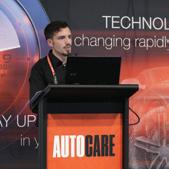


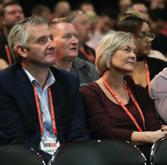


CONFERENCE STREAMS
Mechanical Repair – Technical Program
Targeting mechanical repair automotive technicians
Mechanical Repair – Business Improvement Program
Targeting mechanical repair workshop owners and employees
Automotive Suppliers Program
Targeting automotive product manufacturers and suppliers
Unfair tax must go in new UK free trade deal
THE Federal Government should abolish luxury car tax (LCT) in its post-Brexit negotiations with the United Kingdom, says automotive peak body, the Victorian Automobile Chamber of Commerce (VACC).
VACC says now is the time for the Morrison-led government to do the right thing and drop what it claims is an unfair tax.
“The automotive industry is fed up with the Federal Government continually espousing its so-called free trade agreements when it maintains what has to be the laziest tax in Australia,” said VACC CEO, Geoff Gwilym.

Netting the Federal Government $640 million during the 2018/19 financial year, LCT is the tax with no real purpose except to penalise ordinary Australians for wanting to upgrade their vehicles to safer, more environmentally friendly models. Luxury car tax applies to all motor vehicles $67,525* and over, including GST. LCT is charged at a rate of 33 percent for the component of the price exceeding
So-called luxury vehicles above the LCT threshold include the Toyota Prado, Ford Ranger Raptor, Nissan Patrol and Mazda CX-9, vehicles popular with farmers and motorists throughout regional Australia.
More damaging is the fact that new ‘luxury’ vehicles are technological spearheads, used by automotive manufacturers to apply the latest technology. This provides increased safety,
Government encourages consumers to retain their existing vehicles longer and that just makes the Australian car fleet older, more heavily polluting and less safe,” said Gwilym.
“VACC says it’s time for the Federal Government to get real on free trade and let Australian consumers buy cars without the impost of redundant and unfair taxes.”
* $75,526 for ‘fuel efficient’ cars using fuel
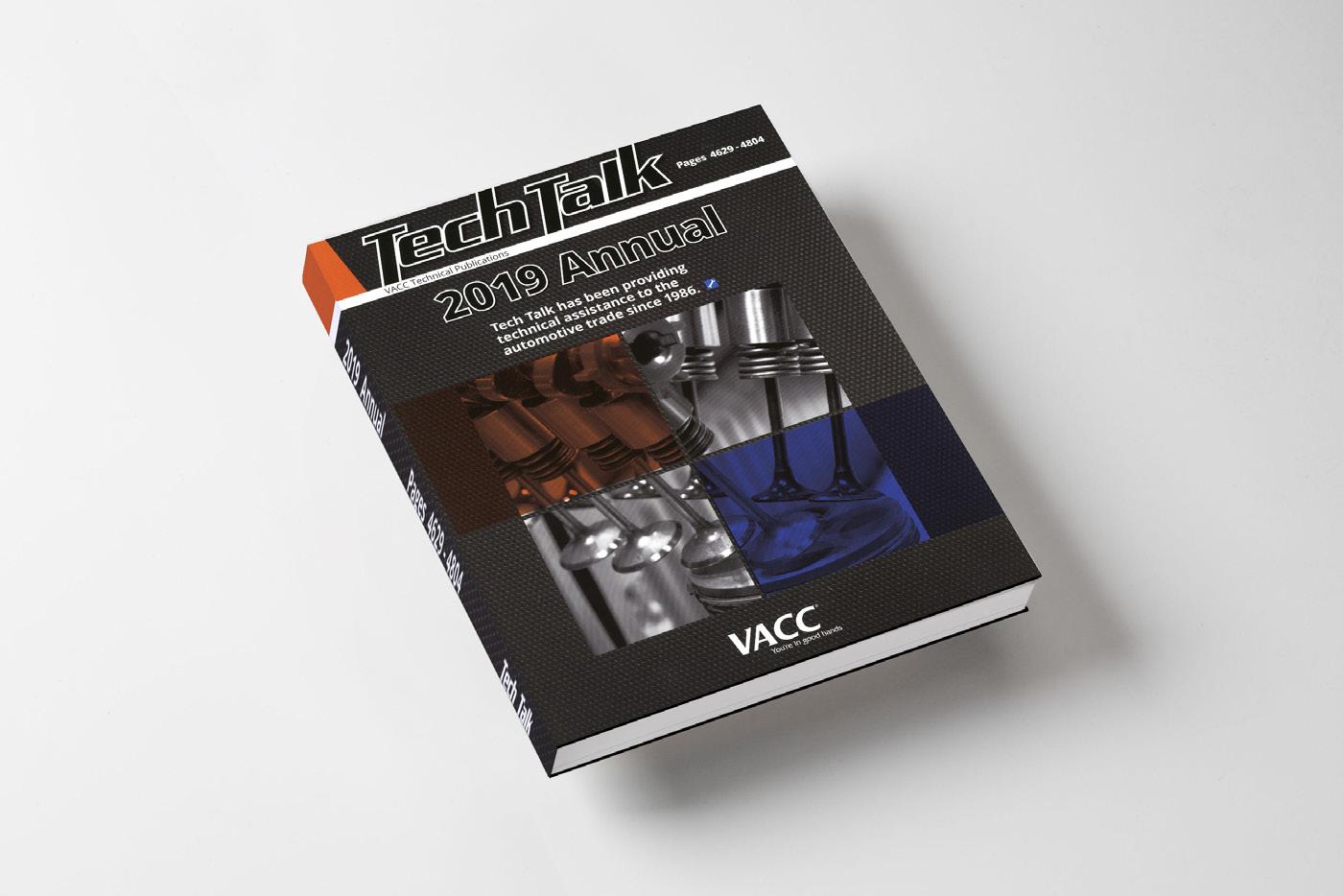

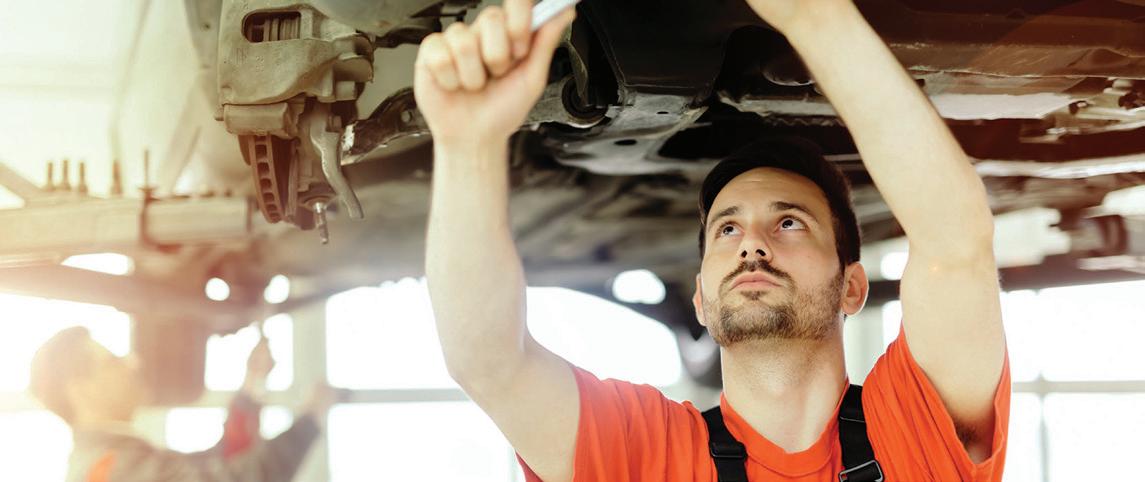
Business support every step of the way.
Whether you’re starting, running or growing your business, CommBank, proud Alliance Partner of VACC can help you do business your way.
Dedicated support for your business
To help you take your business to the next level, VACC members can benefit from direct access to a dedicated CommBank Relationship Manager and team of specialists who will work with you through every stage of your business life cycle. You’ll also receive 24/7 Australian based phone support for all your business banking needs.
Business products and solutions
VACC members may be eligible to access the latest innovative business banking products and solutions with preferential pricing applied to make it easier for you to do business. These include:
• No merchant joining fee
• Same day settlement every day of the year^
• Daily IQ - free business insights tool with CommBiz and NetBank
• Business Loans and Asset Finance
• Overdraft Facilities and Bank Guarantees
• Free business financial health checks
To find out how CommBank can help you do business your way, contact VACC on 03 9829 1152 or email marketing@vacc.com.au and they’ll put you in touch with a CommBank Business Banking Specialist

A true gem
BRUCE Parker’s chosen area in automotive has been through immense change during his decades running HM GEM Engines. True, the automotive industry in general is ever-evolving. However, in many ways engine reconditioning has already weathered changing technologies and consumer values – and Bruce and his team have had to adapt in order to survive. Bruce sat down with VACC CEO, Geoff Gwilym to share his thoughts and commemorate his recent 50-year membership milestone with the Chamber. Bruce insists that he was always headed down the trade route. He attended East Doncaster State School, before kicking off his trade education at Box Hill Technical College, then Richmond Technical School. “Thank goodness my mother had the sense to send me in that direction!” he recalls. Bruce’s father was a mechanic before joining the air force as a flight engineer, passing away after he returned from the war. So, it was Bruce’s mother who raised and supported the family; Bruce being in his early teens at the time. He recalls, years after the fact, learning that his mother would travel down on the bus to do the night-shift at a food packing business, making her way back home in time to get the kids up for school. The war widow pension wasn’t enough to bring up a family, and so Bruce’s mother did what she had to do. That industriousness is something that has been passed on to her son.
Bruce was eager to learn the trade, but he had a false start as “all (he) could do at Box Hill Technical College was fitting and turning and sheet metal... they didn’t have a trade subject for mechanics”. So, in 1958, during his fourth year, Bruce’s mum organised a transfer to Richmond Technical School so that he could study mechanical and engine reconditioning. In those days, to be a qualified mechanic, engine reconditioning was part of the apprenticeship package. There was no separate trade, and so Bruce learnt crankshaft grinding and boring, familiarising himself with all the different machinery.
“I loved it, I loved every minute of it,” he declares.
Bruce went on to do his apprenticeship with Preston Motors, commencing with the business in 1960. “They were a great company to work with and during that
time I did more engine work... that was my specialty,” he says. Preston Motors had their own reconditioning division and Bruce got a gig – “but not the title” – working in there while a supervisor was away on leave.
After five years, Bruce left the company after being conscripted to the army. Fast forward a few years and he was running the assault swimming section. It was during this time that the Whitlam Government made the decision to scale back Vietnam initiatives – leaving Bruce at a loose end. Although his army career was cut short, he still maintains that it taught him good old-fashioned leadership. “It was the best management course you could ever do. It really set me up very, very well for running my own business. It’s all about systems, discipline.”
By the end of 1969 he was self-employed. For about six months he had a steel shed in the backyard of his mother’s
and “had a policy every year of buying one new piece of machinery”.
There was an understanding that the partnership was a convenient set-up for the time being, rather than a long-term arrangement. Eventually, Bruce took the reins of the engine remanufacturing segment of this business and under his direction the company continued to expand – including the 1998 acquisition of GEM Engines, a New South Wales company. Thus, HM GEM Engines was born. The business prospered, with Bruce remembering “at its peak in 1999, we re-manufactured just under 40,000 units per annum. Now, we build less than 1,000... quite frankly, it was heaven back then”. In those early days, people would buy a car and invest in getting its engine reconditioned. To the consumer, it was a no-brainer financial decision because cars were worth a lot. “The engine
From left: HM GEM Engines owner Bruce Parker, VACC CEO Geoff Gwilym and HM GEM Engines General Manager Dean Taylor
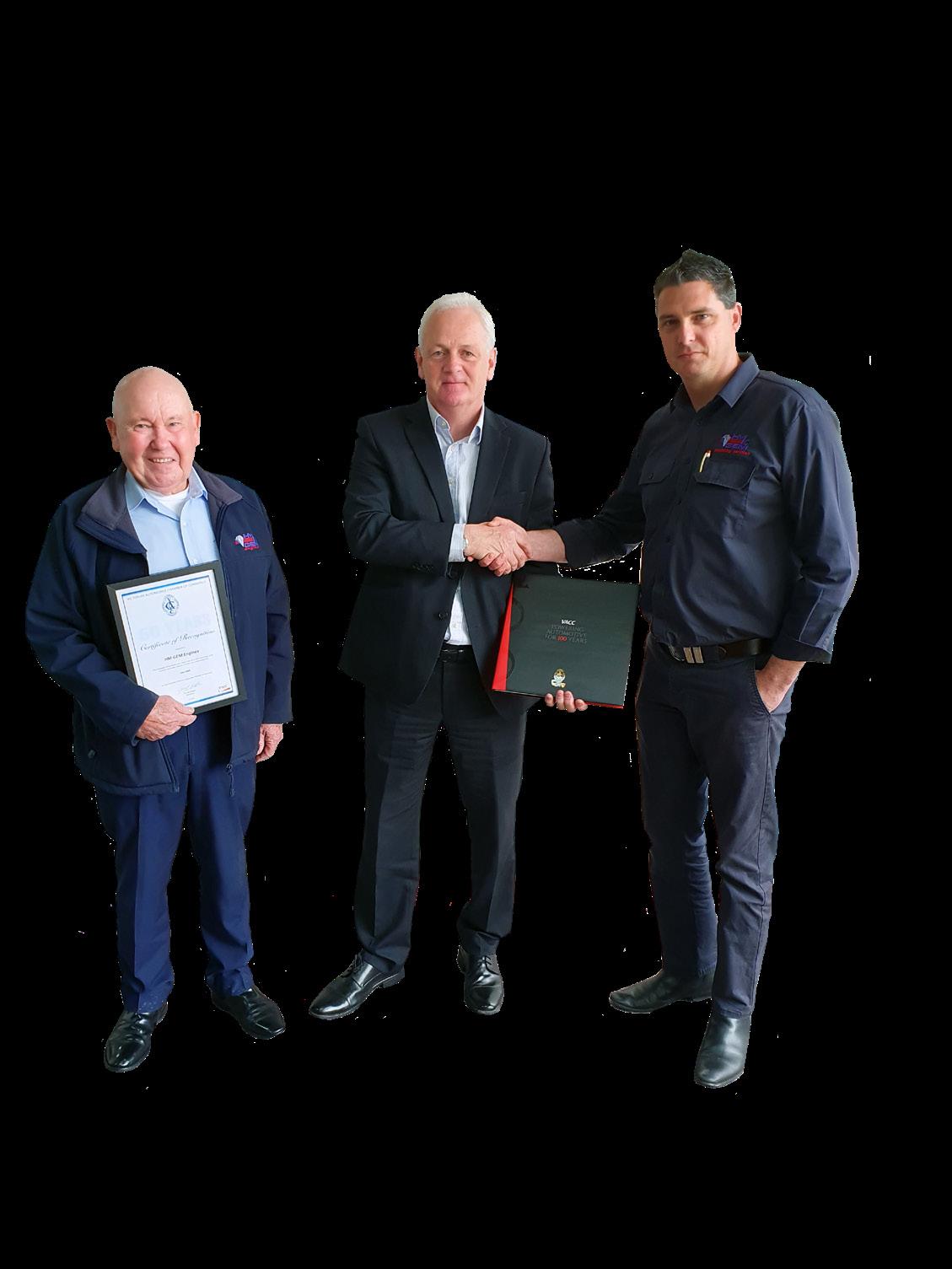

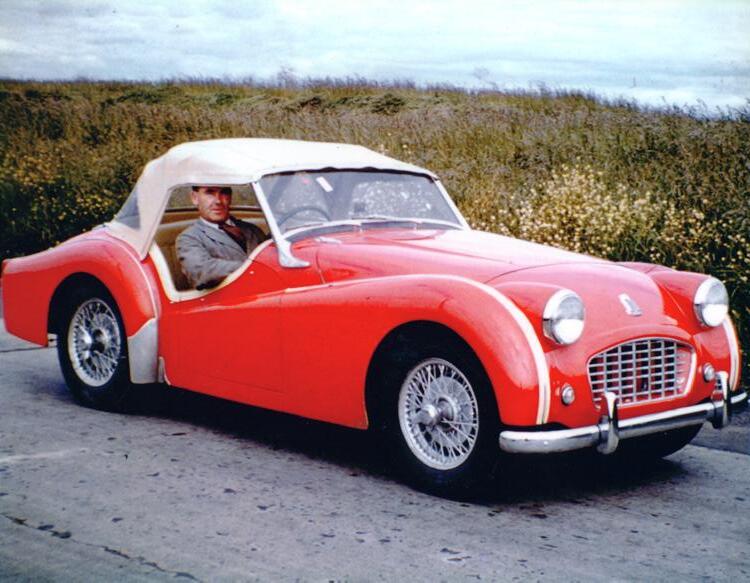
Bruce had to rethink his business model. This saw HM GEM Engines branch out to offer professional engine reconditioning and cylinder block machining services, as well as crankshaft/ camshaft and cylinder head servicing.
Reflecting on the support and relevance of the Chamber during these years, the former Chairman of the VACC Engine Reconditioners Association of Victoria is emphatic. “VACC has been absolutely first-class, I couldn’t have wished for a better organisation to be a part of. I started with the General Division, and then Engine Reconditioning as a specialist Division and all the way along the line the support has been first class.

“I am so pleased, and I applaud VACC for its work. For the whole of the 50 years that I have been a member, VACC has been ground-breakers in ensuring that the members are not pushed around by big oil, OEs...”
Thirty years ago, engine reconditioning, fuel retailing and radiators were big business – now they are among the smallest of the VACC Divisions. It’s not good or bad – but it reflects a clear trend in the industry. Now, Bruce casts his mind to what the future holds for automotive in the next 30 years. “In my opinion... technicians will take over from the traditional mechanics, but they’ll be all about electronics: auto-electrics, diagnostics and all of the aspects that are in that group.”
Bruce has a clear vision for HM GEM Engines too. “I want this business here to be ongoing. I have had opportunities to sell it and I won’t sell it, because of the people. I am well past retirement age, I am 75 years of age and I have people with me here that have been with me for the whole 50 years.” Bruce’s tight-
Dean Taylor, who has been with the business for 22 years. “Dean came directly from school. He was smart enough to do a degree, but he wanted to know everything there was to know about engines and three years ago I made him General Manager. And that gives me a great degree of satisfaction.” It’s hard to count how many engine reconditioners there are now in Australia, although Bruce admits probably “not that many anymore”. However, he does believe that the industry has had as much rationalisation as possible. “There’ll be more specialisation, those that have specialised in an aspect of business are doing very well.” Bruce uses his friend, Ian Shugg, who primarily does crankshaft work, as a prime example. “He is excellent, right at the top of the industry. He’s getting on now but whatever happens, that business can be ongoing.” So, is anyone going to rebuild an electric motor? “Yes,” says Bruce. “The financial equation will stack-up. They may not be the electric motors that are being used right now, but in the future, there will be – there will have to be – electric motors that can be rebuilt. However, I can’t see an electric motor taking over from a 5000-horsepower diesel engine for very heavy dump trucks because those engines are made to be rebuilt.” That’s heavy covered, but what about a suburban car? “Questionable,” Bruce admits, “but a suburban delivery vehicle, depending on the size, yes – they will.”
Another major challenge facing engine reconditioning today is a lack of upand-comers being trained. The only way forward is for businesses to take on training themselves. “We’re actually taking people in… because TAFE colleges do not have the equipment anymore.” Bruce starts them on engine assembly
and then progresses them into machining work. “That works well for us,” he says. “Well, yes and no,” Bruce says, when considering whether he envisaged his own children joining the business. He talks proudly of them, gifting Geoff a copy of his son Mick’s biography, Spirit High: The Mick Parker Story, written following his passing in 2009 after summiting Makalu in the Mahalangur Himalayas.
“He is the only Australian ever climbing over 8000-metre peaks that had never used oxygen... he was never happier than when he was on a big hill,” says Bruce.
In Mick’s memory the family established the Michael Parker Foundation, which provides educational opportunities for underprivileged children in Nepal and East Timor – something Mick aimed to do after he retired from climbing.
Bruce’s other son, Daniel, has his own small manufacturing business that employs four people. He did an engineering apprenticeship as a fitter and turner, Bruce maintaining, “I wouldn’t let him do an apprenticeship in this company because I didn’t think it was right. Nor was it right for him to come straight in at the top level. But he has worked through every single section of this business now, prior to starting his own show. And he’s good. Like his brother, he worked in this business as a kid at school – dismantled engines, got dirty and learnt about engines and understanding what makes them go but also what makes them fail. I expect he will take over from me.
“I run this business here like a family. Part of that is the way I was brought up,” says Bruce, and it’s clear that this value system goes beyond workshop walls. Bruce is involved in multiple charity projects, including the East Timor Roofing and Training Company. Additionally, as a Past President of the Australian Commando Association – Victoria, Bruce is the cofounder of the Commando Welfare Trust which provides a first-class education to dependent children of fallen and wounded Commandos. “We look after our own,” says Bruce.
HM GEM Engines has also won the Prime Minister’s ‘Employer of the Year’ award multiple times, the honour recognising Bruce’s commitment to developing employment opportunities for people with disabilities and troubled youth.
A proud Australian, Bruce insists: “We live in the best country in the world... we are still growing and developing as a country, but it is the best... and we have an obligation to keep it that way for future generations.” Although he shows no sign of slowing down any time soon, reflecting on his years in business and long-standing association with VACC, he puts it plainly: “It’s been a great journey with you guys, it really has. Thanks for the journey.”
Bruce Parker's father in his Triumph TR3

New Industrial Manslaughter Bill in Victoria
ON 26 November 2019, the Workplace Safety Legislation Amendment (Workplace Manslaughter and other matters) Bill 2019 was passed by the Victorian Parliament. The Bill will now be presented to the Governor for Royal Assent.
The Bill introduces the offence of workplace manslaughter as an amendment to the existing Victorian OHS Act 2004. As a result of the amendment, a person must not engage in negligent conduct that breaches an applicable safety responsibility under the current OHS Act, which is owed to another person and causes the death of that person. Employers found to have negligently caused a workplace death could now face fines of up to $16.5 million and individuals up to 20 years in prison. The amendment is expected to come into effect on a day to be proclaimed or, at the latest, 1 July 2020. The Bill does not cover employees. Employees who fail to meet their safety-related obligations under the Victorian OHS Act could, as previously, be charged with reckless endangerment, which imposes a maximum financial penalty of $3.2 million and a maximum jail term of five years.
The workplace manslaughter offence will apply to: organisations (including bodies corporate, partnerships, unincorporated bodies and unincorporated associations) self-employed persons (sole traders); and officers of employers (as defined below).
Officers of a company, sole traders and partnerships (in addition to the employer) could be separately liable where they are negligent by failing to take reasonable steps on workplace safety to prevent fatalities, including managing mental injury that leads to suicide.
Although the new laws will commence on a day to be proclaimed, or 1 July 2020 at the latest, negligent conduct occurring prior to the commencement of the legislation may still be relevant for the purposes of prosecution if an organisation’s omission to amend unsafe work policies causes a workplace fatality post-commencement.
The term ‘officer’ of a body corporate, unincorporated body or association or partnership has the meaning given by Section 9 of the Corporations Act. Under this Act an officer means:
(a) a director or secretary of the corporation; or
(b) a person:
(i) who makes, or participates in making, decisions that affect the whole, or a substantial part, of the business of the corporation; or
(ii) who has the capacity to affect significantly the corporation’s financial standing; or
(iii) in accordance with whose instructions or wishes the directors of the corporation are accustomed to act (excluding advice given by the person in the proper performance of functions attaching to the person’s professional capacity or their business relationship with the directors or the corporation).
As many VACC member businesses are run by incorporated entities, the new laws may broaden the liability exposure of officers of these businesses (e.g. directors who are family members).
For more information, automotive business owners are encouraged to contact VACC Industrial Relations (VACC members only) on 9829 1123 or ir@vacc.com.au
Alternatively, visit worksafe.vic.gov.au /tougher-laws-safer-workplaces

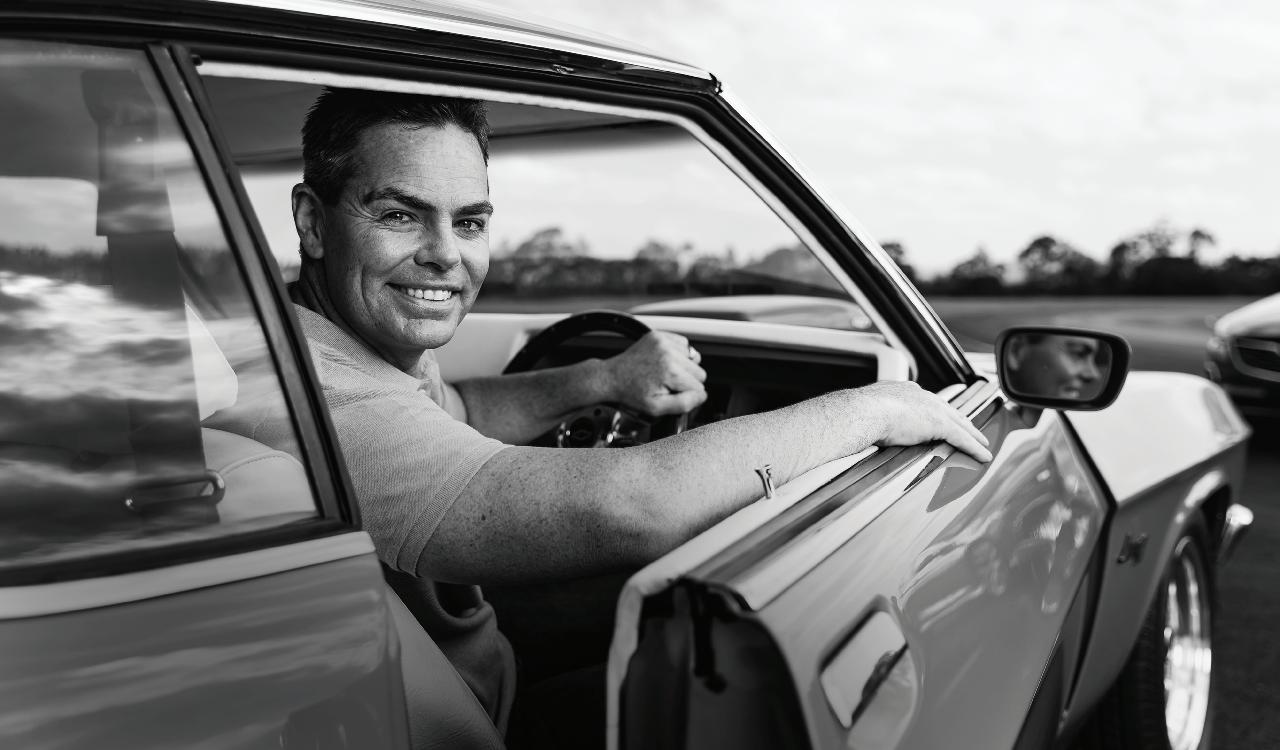
Change lanes to MTAA Super





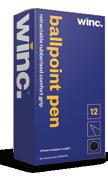

Over 650 Winc Products


High quality and value for money including:
• Copy paper
• Stationery
• Technology
• Furniture
We want you to love the quality of our Winc products, so they’re all backed with our Winc 100% Satisfaction Guarantee. If you’re not happy with a product, you can return it anytime. Exclusive to Winc, we have a range of over 1,000 products across stationery, paper, janitorial and technology, that have been expertly sourced from trusted suppliers.
To


Over 200 Winc Earth Products Made from recyclable materials, our sustainable range includes:
• Toner
• Notebooks
• Binders
• Kitchen tableware

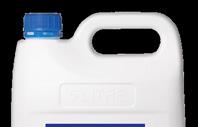

Over 100 Cleera Products
High performing Janitorial, Hygiene & Kitchen products including:
• Cleaning & chemicals
• Washroom
• Kitchen
• Accessories
GIHAN PERERA
FUTURIST IN THE BIG CHAIR
Gihan Perera is a futurist, conference speaker, author and consultant who helps leaders around the world navigate an uncertain, dynamic and exciting future. Forbes magazine rated him the number five social media influencer in the world (and number one in Australia) in his area of expertise. His new book, Disruption by Design: Leading the Change in a Fast-Changing World (First Step Publishing), shows how organisations must learn to innovate to disrupt themselves before somebody else does.
Your book deals with a subject that has many business owners worried. Everyone is talking about disruption and most of them are saying we just hope it doesn’t happen to us. I take the opposite view and call it disruption by design. I say disrupt yourself, meaning don’t rely on what used to work for you. Businesses are disrupted because they don’t look to the future.
How should someone disrupt their own business?
Disruptors quite often come from outside the industry, so you must think like an outsider. So, if you were to disrupt yourself, in other words, be an innovator, what would you do differently? For example, within the automotive industry there is an idea of mobility as a service or people not owning vehicles anymore. You’ll just call one up on an app, like you call up an Uber, except it will be a self-driving Uber. You won’t need a carport; you won’t need parking. It will be like public transport but personalised, so what is that going to do to the automotive industry? It’s also going to affect things like insurance, and you won’t have to do repairs because all of that will be managed by whoever owns the vehicle. We are still a while away from getting to that point but if you think ahead, some of the steps along the way to autonomous driving might resemble public transport now. For example, I want to go from A to B using public transport so I can pull up an app and it will give me a range of options. I can go by bus, train and ferry and all
of them are integrated. Imagine if you had the same thing but with private transport, going from A to B might be a combination of ridesharing, a train, and something like an Uber pool service. So, we are getting to the point now where people are seriously thinking, “Do I want to own a car? Is owning an asset, which for 23 hours out of every 24 is sitting parked, a good use of resources?” If you are in the automotive industry your customers could be quite different in the future. In any business you must ask yourself, “What problem are you solving for your customer?” The problem you used to solve may be different now, because you might have different customers with different problems, so how are you adapting to that situation? So, the book is not about how to be a disruptor in your industry, it’s about how to disrupt yourself so you can continue to be a leader within your industry. It’s really about innovation and I always say, “Start with the customer’s experience.” How do you provide a superior experience for them when solving their problem?
Body repairers have an added challenge because insurance companies make it difficult for car owners to choose their repairer. What advice do you have for them?
Body repairers are further down the food chain. The car owner has a crash, they go through an insurance company, the company has a preferred provider and only then does the car owner get involved in the process. If I was a body repairer, I would ask myself, “In
addition to being reactive when a crash occurs, how can I build a relationship with customers so that they want to come to me?” If your business doesn’t have regular repeat business, you can still build relationships. For example, real estate agents try to have ongoing relationships with customers. They might send you information about what your home is worth, or what your suburb has been doing in the last 12 months. Can you do something similar, tailored to your industry? Can you build a database of customers that you provide regular information to?
What else can the automotive industry do to disrupt their businesses?
Customers may have a stereotypical perception of an automotive workshop, which is not always positive but if you change that perception to where people think, ‘This place is a little bit different’, that will help. When I drop my car off for servicing, the guy walks out to greet me carrying plastic sheets, which he puts on the seat and floor so they don’t get dirty, and I am sure they are trained to do it that way. They don’t make mention of it, but it’s obvious to me that they are looking out for the cleanliness of my car while servicing it. They don’t wait until I leave to put the sheets in and then take them out before I come back – they have made a point of me noticing that they care about the cleanliness of my car. They also always wash my car. None of these things have anything to do with the quality of work they perform, but they have everything

to do with the quality of the experience. That’s what makes a difference. Fixing the car is expected. It’s the little extras that make the experience memorable.
In the book you talk about three key steps.
The three key factors to disrupting yourself are to develop the skill of foresight, leveraging your talent, and taking decisive action. Foresight is about exploring the external environment to understand it more clearly and thinking about the future. Most businesses only set a 12-month goal and many don’t even do that. Businesses need to be proactive by thinking about what might
happen and to make smart decisions as they prepare for the future. Talent is about people. It is about the business owner creating a personal brand – what they stand for. It’s also about your team and your customers. Customers can give you a lot of valuable information about what they are going to be looking for in the future, so don’t keep them at arm’s length. Action is how you get things to market. The world is moving so quickly that if you set yourself a 12-month goal, by month six the goal has become obsolete, and you’ve become distracted by other things. So, how do you get things done when the world is changing so fast? The book covers



those three parts, and if you combine them correctly, you can become an innovator rather than being disrupted.
Like attending seminars, people can read books and become enthused, but fail to take action. How can they avoid that trap?
One of the biggest barriers to change is people want to make really big change quickly. That is difficult to do because it usually takes a lot of effort and money. I suggest you build some momentum by doing little things; just try something. Make it small, do it fast and see what happens. It doesn’t matter if it succeeds or fails because all you are doing is trying little experiments. You might try something simple like texting your customer to let them know what time their car will be ready to pick up. Maybe lots of mechanics are doing that but maybe a lot of them aren’t. What also happens when someone comes back from a seminar and they think, ‘I am really inspired, I have this great new initiative,’ is they do a lot of work to get it ready and they launch it with their customers. The trouble is, they haven’t tested it on real people. There is a project management methodology called MVP – Minimum Viable Product – which is the smallest thing that can be offered to customers, that they are not going to cringe at, but can put out into the market to test. It’s how apps are developed. You build an app, put it into iTunes where people download it, use it, comment on it, and complain about it, then the developers tweak it. Using this model, businesses could offer an additional service to a handful of their

best customers. The business could say, “It may not be perfect, but we reckon its pretty good, we’d like you to try it and give us some feedback on it. There is no cost to you.” Those customers will give honest feedback and then you can decide if you are going to scale the idea.
Some business owners use oneperson surveys, and the person surveyed is themselves. You need to ‘get out of yourself’, and the longer you have been in business, the harder it is to do because you think you know how things are done. If you are Generation X, you think very differently to Generation Y, and Generation Z. They are smart, savvy, they know technology and they like change. Gen Y and Z do things differently, they are thinking differently about car ownership and they think differently about who they support. For example, Gen Z might support businesses that support social causes. A business owner may not be thinking that way, or they might support a cause but don’t think it is important enough to tell their customers. These are the sort of people you should be calling on and getting their ideas. One of the topics I talk about in the book is reverse mentoring, where the boss goes to the youngest person on the team and says, “Mate, how about we have a coffee every couple of weeks and you tell me something I don’t know.” It’s not about

In his new book, above left, Gihan Perera encourages business owners to take control and think outside the box when it comes to positioning their business for the future.
work, it’s about what’s happening in the world. Show me this Snapchat thing that everyone is talking about. Why are young people moving off Facebook? What do you and your mates look at when you choose a new provider? I reckon the first thing they will say is they look on Instagram and the business owner will say, “Oh we aren’t on Instagram. What can we do on Instagram? You tell me what to do.” That is valuable information and you don’t need to find a social media expert to help you, you have people on your team who are already doing it.

EXCLUSIVE TO FORD TRADE CLUB MEMBERS*

1stPrize

$10,000 ...or one of five runnerup prizes TRAVEL VOUCHER




Earn one entry in the prize draw for every $450 (ex gst) spent on Genuine Ford, Motorcra ® and Omnicra ™ parts in a month^
PLUS an additional TEN BONUS ENTRIES when you spend $5,000 or more in a month

Promotion runs from 1 March - 30 September 2020. *Excludes resellers, non-Ford dealers and workshops, fleet workshops, and wholesaler members. ^Terms and conditions apply, see fordtradeclub.com.au/transitcustom Permit No: NSW: LTPS/20/42197, ACT: TP 20/00239, SA: T20/215.
I robot and I drive
Electric vehicles that drive themselves were once the stuff of science fiction, but a Melbourne-based company is proving that such advanced technology can be designed and developed right here in our own backyard
WORDS Ged Bulmer
A straw poll of Aussies about countries at the forefront of autonomous electric vehicle development would likely come back with suggestions including China, Germany and the USA. All would be correct, but we’ll bet London to a brick that few would mention Australia as being a leader in this hi-tech category. After all, didn’t domestic car-making grind to a halt here a couple of years back?
Indeed, it did, but new businesses are rising from the ashes of that collapsed sector like green shoots after a bush fire and one such green shoot is Melbourne-based AEV Robotics, situated in the city’s leafy north-eastern suburbs, and headed up by former Holden and GM executive, Julian Broadbent.
Julian’s background as a studio engineer at Holden saw him work on a diverse range of projects including the VY and VE Commodores, as well as several of the brand’s headline-making concept cars. But it was while working as Director of Advanced Concept Portfolio Planning, and later as Director of Innovation at GM Advanced Design in Detroit in the early 2010s, that he glimpsed the future of mobility through dealings with the likes of Google.
“This was at a time that IT was beginning to disrupt traditional transportation,” explains Julian. “Uber was young, Lyft was still a secondhand vehicle with a pink moustache, Apple was investigating a new HQ and Waymo were secretly testing their autonomous driving cars that looked like a bubble.”
It was a different side of transportation that was exciting to explore as it was less focused on a business model of car ownership and more focused on mobility as a service, he says. But while it was obvious to Julian that transport was being rapidly disrupted, it was equally obvious that something was missing in terms of how the new pieces fitted together.
“No one had created the digital vehicle that supported IT companies and universities (and) could also do the job of a traditional automobile.
That’s where the idea of the Modular Vehicle System came from,” he says.
“What we saw as a gap in the market (was) that no one’s really done a digital vehicle… that has the elements of automotive but relates more to tech companies. It can be programmed, it can be controlled; it’s configured like an electronic device.”
Returning to Australia, Julian set about securing backing and recruiting a team that shared his vision of reimagining urban mobility. Julian and his new colleagues determined they would build a low-speed vehicle that didn’t just fit


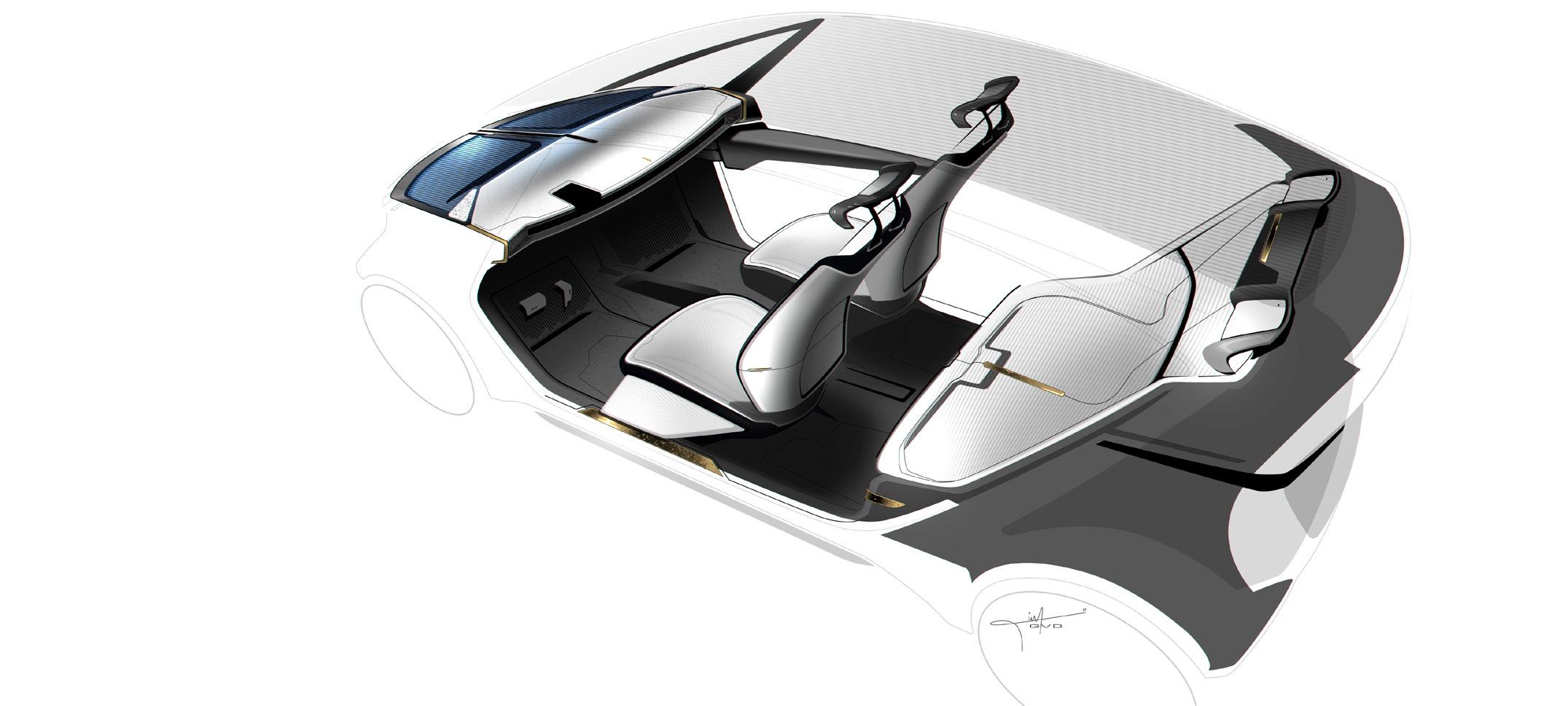
AEV Robotics Founder & CEO, Julian Broadbent presents at Vivid Sydney (above). The Modular Vehicle System is a digital vehicle designed to disrupt traditional transportation (far right and left)




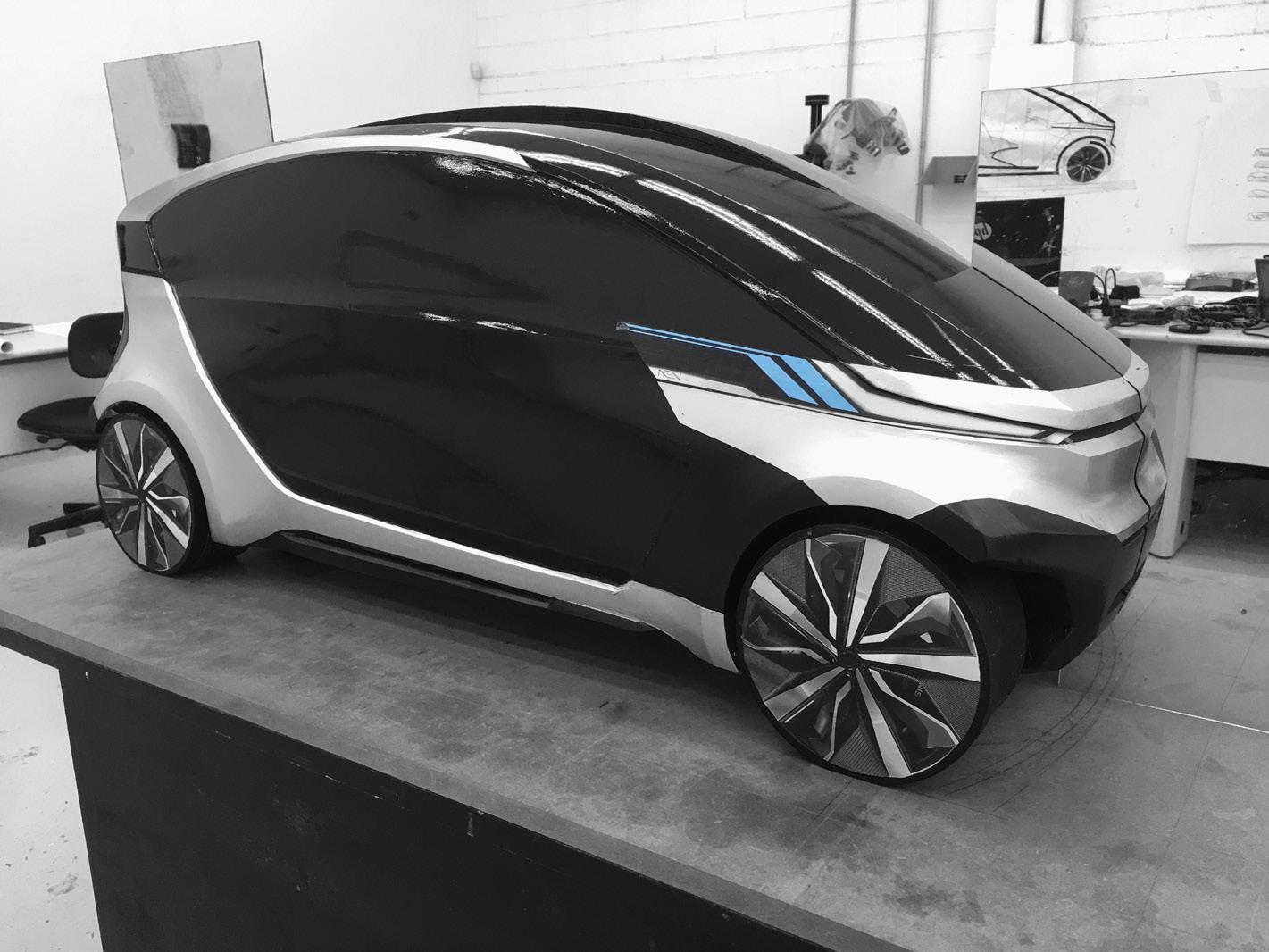
team realised what they were creating was essentially a smartphone with wheels, in so far as it featured a single electric vehicle base which could be fitted with various ‘top hats’ or pods, depending on usage.
The team worked on several iterations for around three years, before revealing the fourth generation Modular Vehicle System at the influential Consumer Electronics Show, or CES, in Las Vegas in January 2019. That vehicle was basically a digitally controlled robotic base or ‘skateboard’, which was lightweight, electric, and multidirectional thanks to four-wheel steer, with a futuristic people mover pod on top, featuring radical full-sliding doors.
The vehicle’s appearance at CES “basically blew people away” says Julian, despite what he acknowledged was a “very modest kind of display”. With their idea validated, the team returned to Melbourne and turned its attention to delivering a preproduction vehicle to B2B customers including universities, automakers, and technology businesses –some of whom had purchased and trialled early iterations.


The point of difference between the Modular Vehicle System and a traditional car is that AEV has been able to slim-build a base that drives by itself (above). The Melbourne-based team has been working on the Modular Vehicle System for four years now (below). AEV Robotics is aiming to put Australia back on the car-making map (clockwise from top right)

to have a final production-ready version in around 18 months time.
Julian also believes that ongoing low volume production of the base is “entirely possible here in Australia”.
“We’re taking on a global opportunity and we’re serious about it. Export out of Australia is possible when you don’t make a car… (because) shipping puts a lot of money on the hood of every vehicle.
“When you start to look at a modular vehicle system, where you’re shipping a flat pack kind of chassis, or base as we call it, now you’ve reduced that barrier to entry and the business case starts to stand up pretty damn good.”
He adds that the fundamental difference between the Modular Vehicle System (MVS) and a traditional car is that AEV has been able to slimbuild a base that drives by itself.
“In essence it’s a complete vehicle that includes an operating system, API, software and data storage capability. We’re thinking about the vehicle design from the perspective of an electronics/robotics provider rather than that of a traditional automaker.”
The base comes with two lithium ion battery options, depending on range requirements, and can also incorporate other driving tech, such as four-wheel steering. Each base can also be individually programmed with specific end-user software, enabling the operator to use it more efficiently.
“There’s a million people invested in autonomous driving right now and our goal is to provide the perfect digital vehicle with a perfect interface and redundant architecture so when their stuff fails, or it needs a backup… we look after them.”


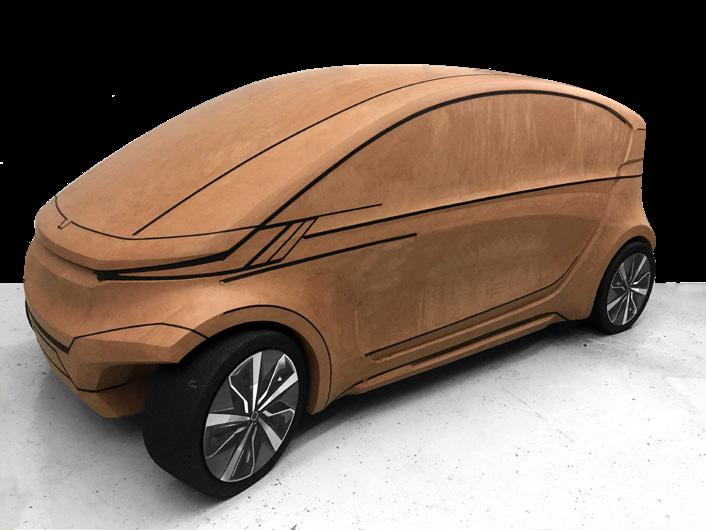



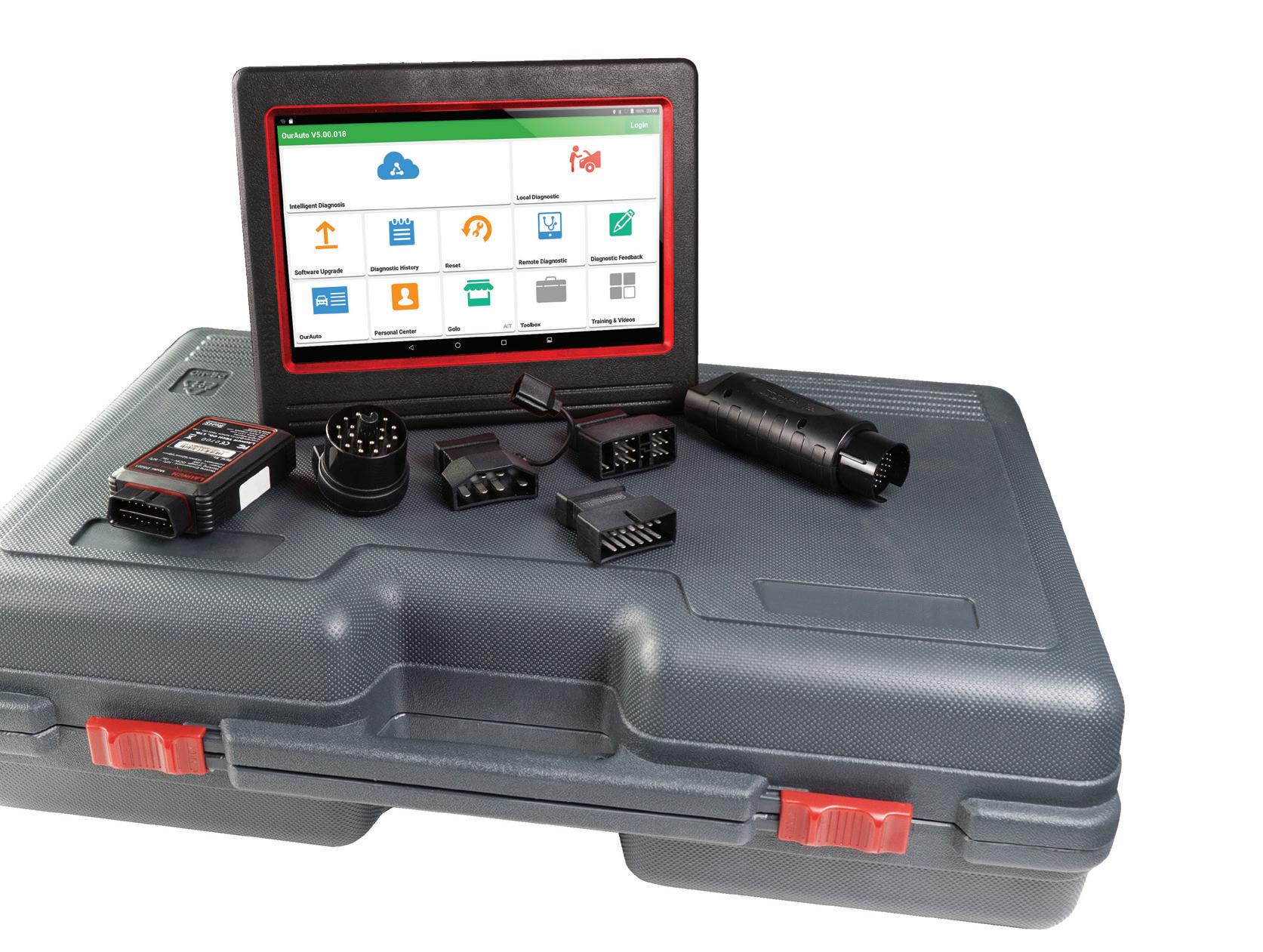

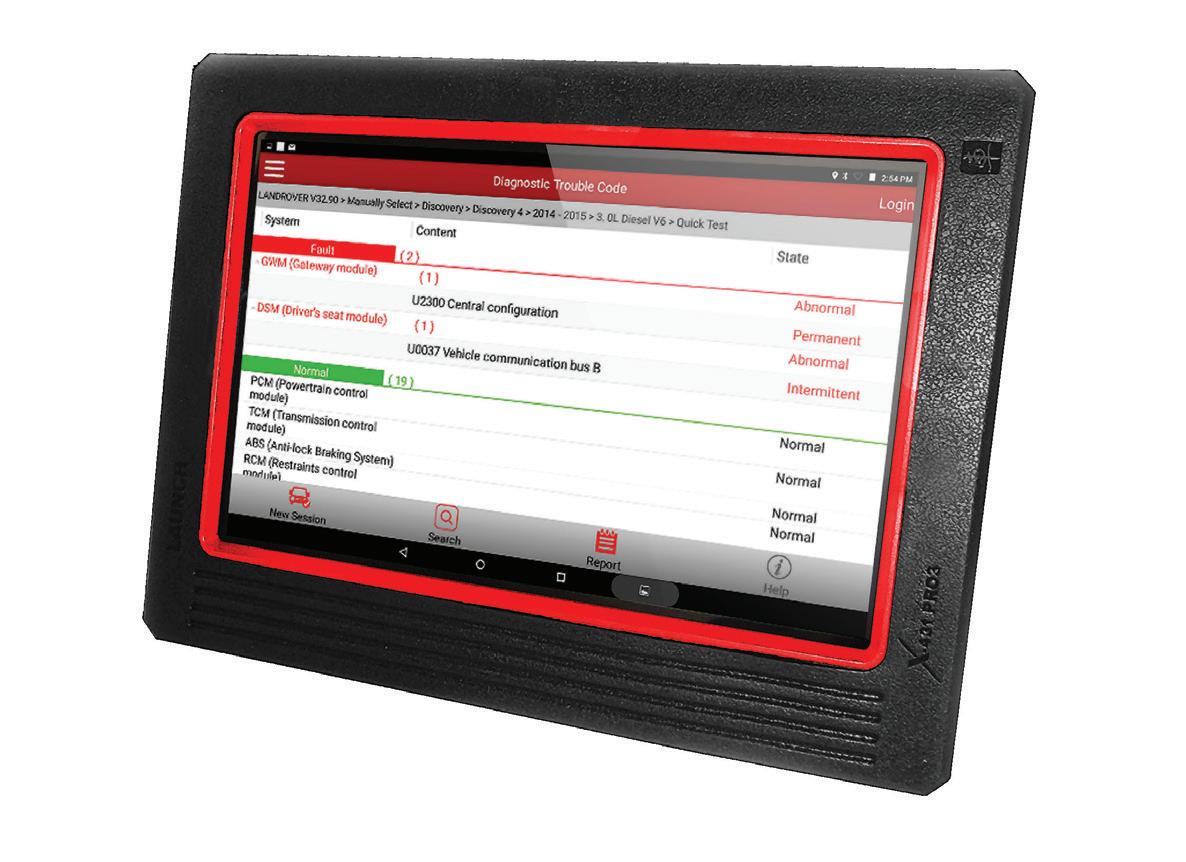

• OEM level access to module programming, resets, relearn; key programming and normal diagnostic functions
• Covers a large range of vehicles worldwide
• Capable of performing a vehicle health check on all systems on late model vehicles (checking all computers on vehicle)
• Dynamic vehicle health reports
• Ability to send email reports to customers
• Regular software updates
• Reads live data and graphs information for comparisons
• Alarms can be set for range sensor problems
• Has quick resets of fault codes
• Automatic vehicle model detection on late model vehicles (mainly European)


Everything gives off heat. Turns out it’s one of the best ways of working out what something is
WORDS Paul Tuzson
WHEN Australian Automotive looked at sensors for autonomous vehicles a couple of years ago we concentrated mainly on LiDAR. This highly capable technology, combined with ultrasonic sensing, radar and visual images from cameras, were seen as the sensing quartet to safely guide us into the future. And it’s true, as long as we don’t have to drive into blinding sun, driving rain, heavy fog or maybe even smoke. In current hands-off, semi-autonomous developmental systems, challenging conditions like those mentioned usually call for a human driver to take control. That’s a long way from full autonomy. What’s more, humans are often next to useless in those conditions anyway. We all know how difficult it is to see into direct, late-day sun. Also, suddenly asking a human to snap out of a relaxed, distracted state and instantly make split-second assessments in a highly dynamic situation and then act on them safely is plainly ridiculous. This is particularly so when the situation is beyond human physical capabilities by definition. Dealing with these conditions reliably is one of the great challenges facing full Level 5 autonomy for vehicles. Thermal imaging based on the detection of infrared radiation is a technology that can assist in providing an effective solution to these problems. Infrared radiation makes visible all sorts of things normally invisible to the human eye. Importantly, it does so under a wide range of conditions, both day and night. It’s sometimes thought that night-vision systems and thermal imaging systems are the same, but they’re not. Night vision systems rely on the amplification of light that’s being reflected from a scene. Even if there’s very little light available, a high quality night vision system will capture it, enhance it and turn it into one of those green images so prized by spies in relatively recent times. But if there’s no light, no image is possible.

Thermal imaging has nothing to do with reflected light. A thermal imaging system is sensitive to thermal energy emitted in the form of infrared radiation. This covers the widest range of objects because anything that has a temperature above zero degrees kelvin (minus 273 degrees Celsius) emits thermal radiation. That covers basically everything, and certainly anything relevant to a moving vehicle. Even ice cubes emit infrared radiation. The hotter an object, the higher the frequency of the radiation it emits. A thermal camera converts the differences in the frequencies (temperatures) of the object in a scene into a picture. Such cameras are used in a wide range of industrial applications. For instance, excessive heat is often a precursor to component failure. So, observing the thermal signature of, say, a bearing can indicate if it’s likely to fail. Preventative maintenance is much less expensive than a failed component. Also, heat-leaks from systems can be determined and remedied. The applications of thermal imaging are many but we’re interested in just one –the ability to distinguish one object from another, and how such differentiation can be used to help guide an autonomous car. It’s true that the four technologies mentioned above have just about everything covered but the fact that thermal imaging is much more sensitive to frequency than intensity means it isn’t affected by the blinding glare of on-coming headlights or late summer sun. It could well be the technology that bridges the capabilities of the four main sensing systems and finally allows the removal of humans from the vehicle control loop once and for all. Infrared imaging is not a new technology. As might be expected, some of the earliest uses were military. In the ’60s and later, for instance, infrared cameras allowed lumbering B-52 bombers to hug the ground to avoid radar detection.

This type of image – with regions of differing colour representing different temperatures – are what we tend to think of when we consider infrared thermal imaging. However, the colours are simply there to aid with visualisation (left). It’s not just people that are easier to see. Everything emits infrared radiation. Hand held units are widely used to examine all sorts of sytems in industry (below)


Imaging systems of this sort are called FLIR (Forward Looking Infrared) as opposed to SLIR (Side Looking Infrared). One application of a SLIR system would be when flying a surveillance aircraft along the border of another country. Of course, FLIR imaging systems are the type used for navigation. Given the well established use of FLIR in guiding military aircraft in missioncritical/life-critical applications, FLIR technology would seem to be a natural fit for automotive applications. A number of manufacturers have included this basic technology but it’s usually known as night vision and seen as a way to augment drivers’ vision in darkness. Indeed, these systems present images on screens for direct interpretation by drivers. It’s a great idea and definite safety benefit but not of much use for an autonomous system with no human input. Using thermal imaging to plug the gaps in the four main sensing technologies for full autonomy doesn’t seem to be part of the plan from the major players in this area.
The night vision assist Audi offers for multiple models uses infrared technology. It reacts to the heat projected by objects. Converted to black and white images, the information can be viewed in the instrument cluster or Audi virtual cockpit. Cooler surroundings appear dark, while animals and people appear strikingly bright (above). Thermal imaging sensors/cameras have become small enough for unobtrusive inclusion in vehicles (left)
It’s true that every extra sensing system added to a vehicle adds considerable cost and increases pre-market development time. Companies have to draw the line somewhere. Tesla is a prime example of this type of production pragmatism. As has been widely publicised, the company says it doesn’t need even the four basic sensors utilised by other manufacturers.
It elects not to include LiDAR, with Elon Musk going as far as describing the technology as a “fool’s errand”. We’d hate to hear what he thinks of thermal imaging as an input for an autonomous system. It must be said that Musk does know what he’s talking about. The autonomous capabilities of Tesla models, as revealed at last year’s Autonomous Day, are
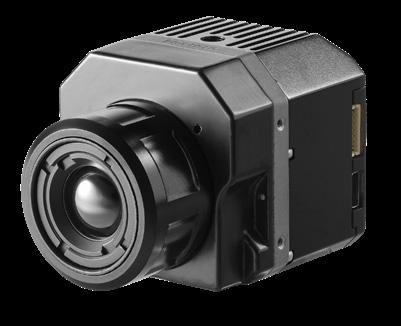
Last year Aptiv, Audi, BMW, Volkswagen, Intel, Continental and others published a paper called Safety First For Automated Driving It seeks to assist in “working toward the industry-wide standardization of automated driving.” From the scope section of the publication: “The goal of this publication is to provide an overview of and guidance about the generic steps for developing and validating a safe automated driving system.” Infrared or thermal imaging isn’t mentioned despite the fact that some of these manufacturers have offered thermal imaging night vision systems on some models.







staggeringly good without LiDAR. But as we’ve said in the past, we think Tesla might eventually include LiDAR when prices drop to acceptable levels. Perhaps thermal imaging might follow a similar utilisation pattern. Really, if a beneficial technology becomes cheap enough, why not include it?
In the immediate future, Tesla and other manufacturers are still thinking in terms of selling cars to individuals. This generally calls for the lowest production costs possible. At the same time, however, they’re also preparing to offer autonomous car owners the option to submit to a TaaS (Transport as a Service) fleet when they’re not using them and earn money for doing so. Such cars will have to be completely safe and reliable all of the time. No exceptions. If the costs of the technology to make them so were defrayed by a positive income stream from hiring, we might see the inclusion of things like thermal imaging.

FLIR® makes a large range of infrared imaging systems for many different situations (left centre). In order to encourage the adoption of infrared image technology for automotive applications, FLIR makes available a huge number of training images for use with AI and its ADK (Automotive Development Kit). We’ve included a selection that shows how useful infrared imaging can be (left and over page).
The Safety First for Automated Driving guidance paper doesn’t mention infrared thermal imaging, but it probably should (left below).
The starboard bulge under the nose of late model B-52 bombers houses a FLIR unit that has extended the useful service life of this heavy bomber originally designed back in the ’50s. Unfortunately, this is the actual aircraft that crashed in Guam killing all on board (above right). Small, hand-held infrared imaging systems can detect heat signatures through fog and smoke, which makes them essential equipment for fire fighters (right)

It is suggested that TaaS will greatly diminish vehicle ownership in coming years. We covered this in our 2017 article on the RethinkX report. To reiterate, if personal ownership does wane, car manufacturers will have to start offering TaaS. The alternative would be to
wholesale cars to Uber and the like on terms dictated by such organisations, which would be most undesirable.
Offering TaaS might also be a way of keeping a modified form of brand loyalty alive. With appropriate marketing, people might still call for a particular model from a certain manufacturer. Superior safety would almost certainly figure in such campaigns and infrared imaging, along with LiDAR, as additional safety features could certainly be made relevant.

Image: Technical Sergeant
Robert
J. Horstman


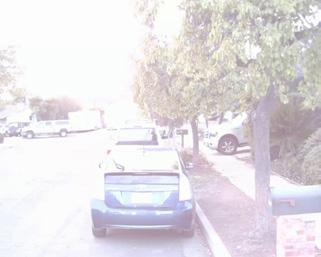

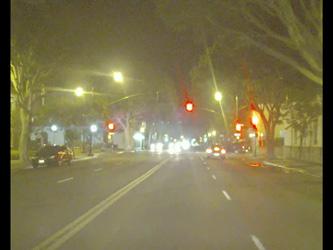

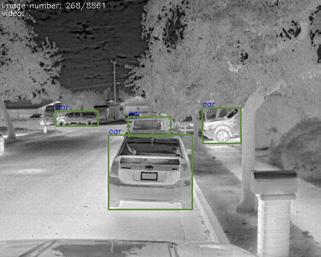


Jan Kopriva Pexels
Many of the hand-held infrared thermal image cameras seen in industrial applications are from a company called FLIR®. Now, that’s clever marketing, adopting a well established and widely used industry acronym as your company name. It’s a bit like a car manufacturer calling itself CAR. I need a new CAR. That’s a nice CAR. I bought a CAR. In the same vein FLIR thinks FLIR is well suited to object recognition in autonomous vehicles. High quality thermal imagers/ cameras are capable of resolving very small temperature differences. Consequently, as the accompanying images from FLIR show, the outlines of various elements in a scene can be determined quite easily, much more so than with standard cameras in many situations. The company also points out that adding a distinctly different type of sensor to the conventional package described earlier increases redundancy and therefore, safety. FLIR systems can ‘see’ much farther than a person can see with headlights. The resolving range of current FLIR systems is much greater than previous systems, the sensors are smaller and the cost has come down considerably. Once FLIR systems enter mainstream car production, as FLIR suggests they will, costs will fall even further.
Also, the power requirements of current FLIR units is reduced compared with earlier types. The company says there will be still further reductions in this area. When mirrors were first fitted to cars they weren’t compulsory but as the benefits became obvious they became compulsory fittings. As we move ever closer to full Level 5 autonomy, car manufacturers and Tier 1 suppliers are sorting out what works best and what should be incorporated.
As we get closer to the goal of humanfree driving, the benefits of thermal imaging may become so obvious that inclusion of this technology will become mandatory, regardless of individual manufacturers’ opinions. FLIR thinks this will, or at least should, be the case and they make a convincing argument.
Some snakes can sense, rather than see, in the infrared section of the electromagnetic spectrum, but you don’t really want one in the seat next to you (top left). These are just some of the thousands of images FLIR makes available for AI developers using their ADK system for automotive applications. Glare is a major challenge for Level 5 (full autonomy – no humans involved) and for humans currently. Clearly, the infrared images make sense of difficult scenes in both day and night (left, top to bottom)
Image:
OurAuto Insurance
Comprehensive Insurance Cover
Insurance matters when things go wrong and when they do, it’s important that you have the most comprehensive insurance cover possible.
We work with you to understand and manage your risks and then provide Policy options that address your specific insurance needs.
OurAuto Insurance understands the importance of providing the right insurance that matches your needs.
Competitive prices
We are a broker and therefore not tied to a single insurance company. This means that once we understand your insurance risks, we can shop the market on your behalf to achieve a competitive price.
Some recent experiences of dealing with OurAuto Insurance…
“I received great service from OurAuto Insurance. The representative Dean was very helpful and conducted a thorough analysis of my previous quote. I discovered that I didn’t have the coverage my business needed and was able to get full coverage with OurAuto Insurance, while still making a significant saving. Overall it was a 10/10 experience.”
Joe Defina, Defina Automotive
“OurAuto Insurance promised to look into my insurance after I told them I had a claim and my existing insurer had increased my premium to the point it was unaffordable. The advice and the service I received was outstanding. They identified areas I wasn’t covered and helped me understand where my business was vulnerable. They provided outstanding service and came back to me with a real saving, something that made a real difference to my business and with greater overall cover.”
Gentile, Generals Automotive Nunawading VIC
Cover for all automotive businesses
OurAuto Insurance has a goal to seek insurance for all businesses operating in the Australian automotive industry regardless of size and risk profile.
Challenge us to find a better deal
Contact us today and challenge us to find a better insurance deal for your business.

Any advice in this document is general and may not be suitable to your circumstances. VACC may earn commission as a direct result of your insurance placement with OurAuto Insurance.
Call 1300 441 474 or visit


Automotive electrical systems are becoming thin and flexible enough for incorporation into other components


WORDS Paul Tuzson
THERE’S no doubt that automotive electronics are becoming ever more complicated. Vehicles have boxes of electronics tucked into virtually every corner. Of course, this will never change because customers want what they want. New features quickly become the norm and expectations spiral. Consequently, the electrical system of a modern car adds up to significant weight. But while demand for more electronics won’t change, the form in which that demand is satisfied will.
Jaguar Land Rover (JLR) is bringing together a number of technologies that have been in development for some time in an approach it calls LESA (Lightweight Electronics in Simplified Architecture). Basically, the LESA approach consists of printing electrical circuitry directly onto parts, or substrates that are incorporated into parts.
In a trial the company achieved a weight saving of around 60 percent over conventional circuitry and a control module. LESA is a subset of a broader approach known as structural electronics, a term set to become ever more common. Structural electronics, in turn, belongs to the even broader field of smart materials. While weight reduction is important for conventionally powered vehicles, it’s even more so for electric vehicles. This would be reason enough to incorporate structural electronics in future models but the advantages go far beyond weight reduction.
With the onset of autonomous transport, many vehicle interiors will move even
further toward luxury and elegant simplicity. After all, if you’re not driving the car why have all those switches and chrome trimmed dials and instruments? Even before complete autonomy arrives there are solid aesthetic reasons for having function disappear into style.
The LESA trial was an overhead map/ courtesy light and capacitive control module, but JLR plans the complete transformation of future interiors. The company says, for instance, that touch controls and display information could appear on surfaces like wood and that no screen would be needed. JLR says that lightweight solar cells are another potential application of structural electronics.
The company has been working on blending form and function for some time. We mentioned its Bike Sense project back in 2015. This consisted of interior surfaces that changed to red in the direction of potential hazards involving cyclists. The idea is being extended to allow large sections of interiors to be utilised as functional areas.
Structural electronics relies on a range of techniques that have been in development for some time. Printable electronics is an extremely important one and a number of organisations around the world are conducting research in this area. Massachusetts Institute of Technology (MIT) and our own CSIRO are among them. For some years MIT has been working on a stamping technique that creates electronic features at nanoscale dimensions using ubiquitous carbon nanotube technology. Carbon nanotubes are made from a single layer of carbon atoms. At scale they’re extremely strong. The nanotubes shown on the left are multilayered.

Researchers at MIT discovered a way of growing vertically aligned nanotubes in configurations suited to printing nanoscale electronic circuits. The nanotubes are likened to ink bearing quills that can deposit conductive ink onto suitable substrates. One future objective is to print on graphene which will allow ultrathin electronic circuitry. Not surprisingly, precise control of ink deposition at nanoscale is extremely difficult but the ‘carbon quill’ technology developed by the MIT team has managed the problem successfully compared with other attempts to print circuits at this scale. Engineering the correct degree of porosity within the tiny forest of nanotubes has been crucial to controlling ink flow. As is the case with any stamp-based printing process, pressure is the other main determining factor in creating circuits with the required resolution/edge sharpness.
The team built a machine to carry the stamps and were able to create imprints at 200mm per second, which is comparable to industrial printing technologies.

The Jaguar Land Rover LESA concept is a manifestation of structural electronics (left). LESA consists of printing nanoscale electronics on flexible substrates at very high resolution (above)
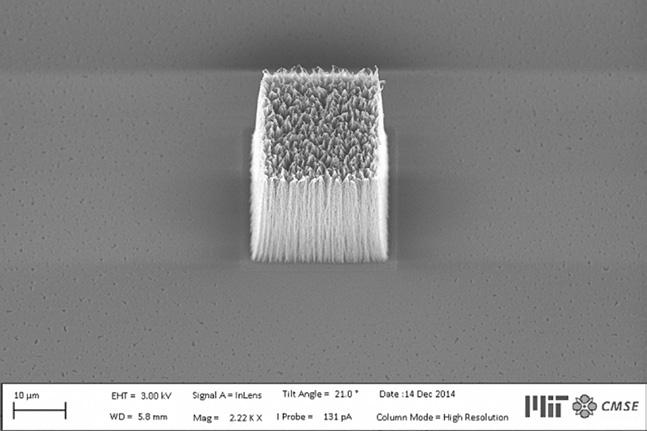
The results of commercially produced versions of this technology will be incorporated into structural electronic components for incorporation within automotive designs. However, that’s just one application of this sort of technology. These techniques are going to touch all areas of our lives, and probably do so in the very near future.
The word ‘innovation’ is overused to the point of becoming hackneyed. However, organisations like MIT and CSIRO earn their international kudos from genuine innovation. In a further contribution to structural electronics, MIT engineers have invented a 3D printing filament that has



Sharpness and accuracy are key requirements for getting nanoscale flexible electronics to work reliably. MIT has developed a process that utilises carbon nanotubes to create extremely small stamps that are porous enough to allow the conductive inks used to flow, while keeping the edges of the finished print sharp enough for purpose (above). MIT can currently stamp circuits at up to 200mm a second, which is comparable to existing manufacturing technologies. Inventing things is difficult enough. Developing realistic manufacturing systems is another difficulty altogether (left). Jaguar Land Rover has prototyped a structural electronics module that heralds things to come. The circuitry is printed onto a thin film that’s then incorporated into the body of the component, the thickness of which was reduced from 50mm to just 3.5mm (below)
embedded circuitry. That’s right. The actual fibre extruded from a standard 3D printer will have electronics inside it. So whatever it’s used to make will automatically contain structural electronics.
Although standard 3D printers can be used, they do require a different head. This is because the filament is, as would be expected, of a different construction to a standard filament. The electronics is bundled in the central section and encased in a polymer cladding. The filament isn’t completely melted as it is in a normal printer. Instead, it passes through the lower temperature head much more quickly so that only the outer cladding is melted. So, as with normal filaments,
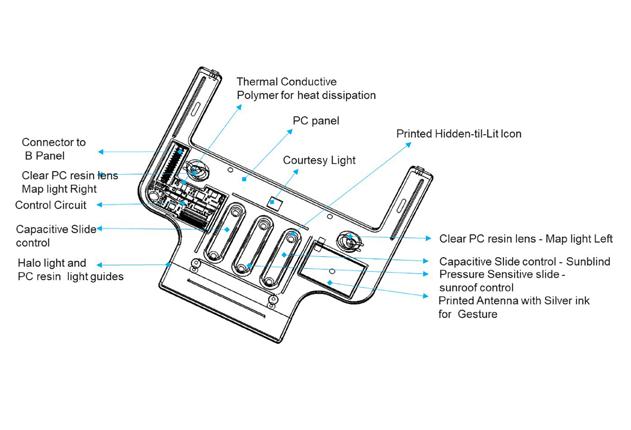



this allows the filament to stick to itself while retaining the arrangement of the electronics in its internal structure.
The engineering team has been developing this technology for a couple of decades. The filaments have within them thermally drawn fibres that contain the electronics. The fibres have electronic components within them that can perform many different tasks. Clever enough, but there’s more. Initially, the fibres and components within them are created at larger scale. Then they’re heated and drawn in a furnace to create a very narrow fibre that retains all of the components in the same relative positions but at greatly reduced scale. Internal components can consist of metal wires, semiconductors for control functions and polymer insulators. An example model airplane wing contained eight filaments with embedded light emitting and light detecting elements. It’s possible to fit even more filaments in a fibre. The team says that previously it hasn’t been possible to deposit a similar mix of components at one time because the technologies for doing so were separate. This represents a major developmental step in 3D printing.
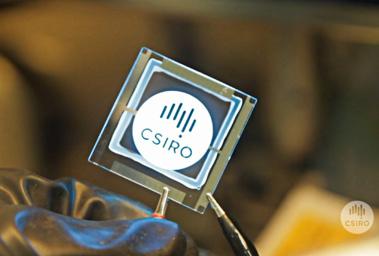
CSIRO has been working on ultra-thin, flexible electronics. In particular, the organisation has been working on printable solar cells and OLEDs (Organic Light Emitting Diodes). Printable solar cells that are flexible enough to conform to irregular surfaces will be useful in allowing all sorts of things, like the exteriors of vehicle roofs, to become energy collectors. Also, because printed solar cells are transparent they can simultaneously provide a tinting effect while collecting energy.
Printable OLEDs in automotive interiors will provide a more direct and meaningful human-to-vehicle interface. As an example, imagine driving along in an enclosed vehicle fitted with an OLED roof lining.
The Jaguar Land Rover Bike Sense project from some years ago featured internal surfaces that changed in response to external conditions. This was possible because of the electronics embedded in such surfaces (top). CSIRO is actively developing flexible OLED technology. As it becomes ubiquitous, illuminated and changeable, surfaces are going to feature not only in cars but in every aspect of our lives (centre). Rapid, continuous printing is the key to future electronics. Here is the CSIRO process that makes flexible solar cells at the moment. Development work is being done to facilitate industrial scale production (left). CSIRO’s flexible solar cells can conform to many forms and surfaces. In automotive applications versions could act as window tints while gathering free energy (right)
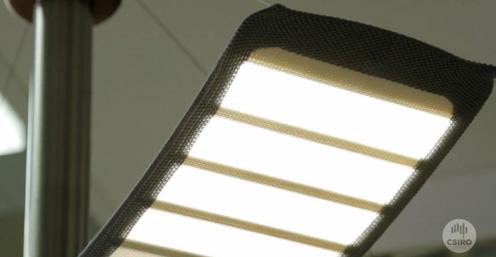
needed) would provide an overhead view of the outside world without the tousled hair. Of course, a strong breeze from the climate system could augment the effect. Industrial giant, DuPont, is also a player in structural electronics technology. It offers In-Mold Electronic Technology solutions that feature circuits printed in special inks suited to industrial forming processes. The company suggests that parts formed in this way can be up to 70 percent lighter because buttons and wires are removed from switches. Also, structural electronics like InMold Electronic Technology and others mean lower costs because production is simpler and more efficient. Further,


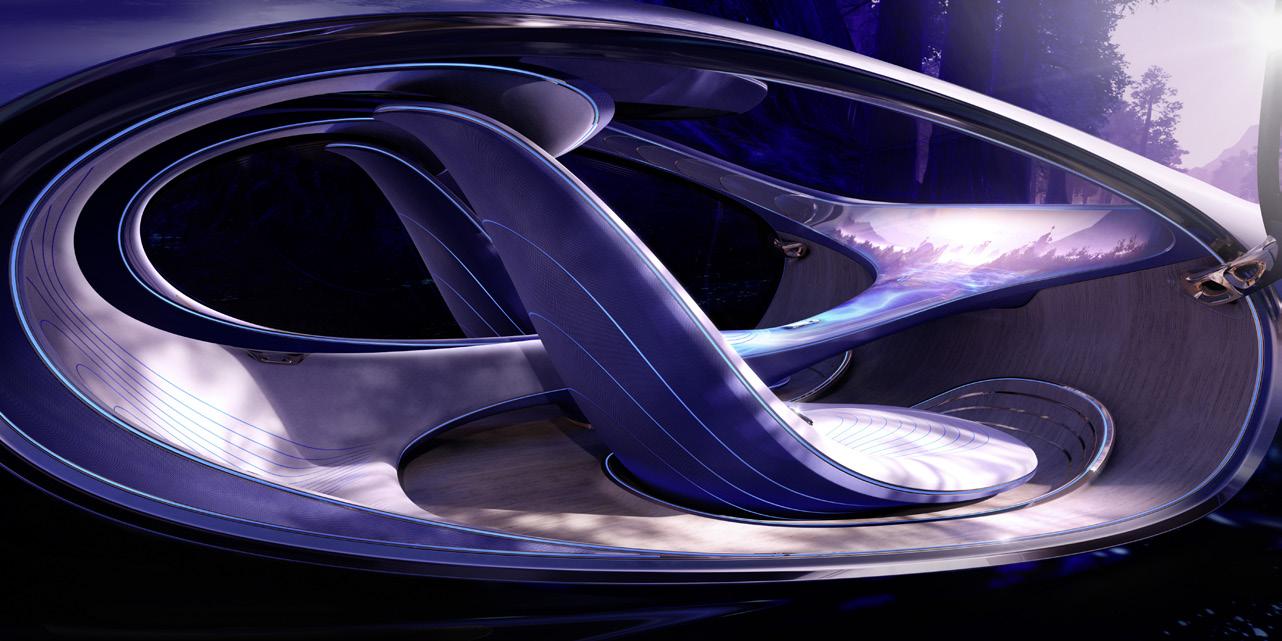
part assembly time is reduced because parts can be designed to snap together. The formed circuit carrying sheets can be combined with injection molding to create embedded circuits in parts of widely varying design. The inks in the DuPont process are specifically designed to withstand the heat of injection molding.
Always at the forefront of vehicle technology, Mercedes-Benz is never far behind the latest technologies with an inspiring concept car. As far as structural electronics is concerned, the VISION AVTR

concept would have to encapsulate the fusion made possible by the structural electronics approach. In fact, a car like this simply wouldn’t be possible without it.
The company describes the VISION AVTR as a possibility for the distant future, a fusion between human, machine and nature. While that might sound dismissively overblown to cynical ears, there is some merit to the composite claim. The design seeks to link human and machine by touch but in reality cars will be completely autonomous by the time such a vehicle enters production. The VISION AVTR was inspired by the movie Avatar but it’s important to remember that the movie was inspired by humans. Cars have always sought to combine human and machine. With green sentiment becoming more popular, perhaps there might be room for a third entity in the relationship. One thing is for sure – whatever the future brings in terms of interconnectedness, it’s going to take structural electronics to achieve it.

Mercedes-Benz says nature served as the main source of inspiration for the interior of the VISION AVTR. The entire structure is designed from one line and takes on organic shapes. The curved display module creates the visual connection between passengers and the outside world. While it’s a superb design, it’s important to remember that it’s a rolling concept (top). Interaction with the car is primarily through a biometric connection consisting of a multi-functional control in the centre console. The interior of the car is activated when a hand is placed on it. The vehicle recognises the driver by heartbeat and breathing (above). When the hand is lifted, a menu selection is projected onto the palm for choosing different functionalities (left). The seats of the VISION AVTR are of vegan DINAMICA® leather. DINAMICA is the first and only microfibre that guarantees environmental sustainability throughout the entire production cycle (below)
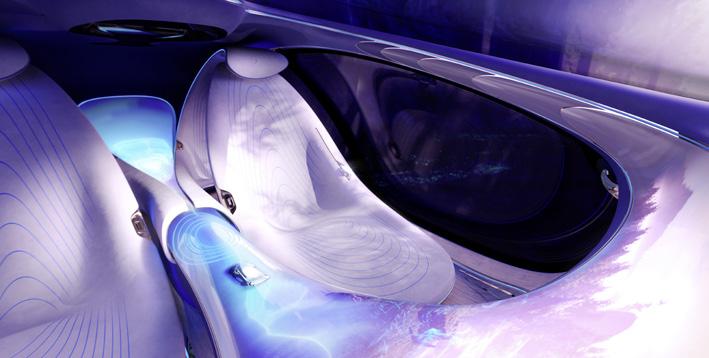


SMART POWER

Smart Power's comprehensive energy management team ensures businesses achieve energy efficiencies, accurate reporting, saving you time and money.
Simply send Smart Power a copy of your current bill and they will do a comparison with VACC's approved electricity providers.
Smart Power, a leader in the Energy Management industry, are offering a free comparison to evaluate your current energy bills.
VACC
Their independent, expert advice can provide you with the tools to be more efficient, sustainable and achieve the best possible overall productivity for your organisation.
Get in touch now to claim this limited time offer!
Contact Daniel Ellul from VACC Marketing by phone 9829 1152 or email dellul@ourauto.com.au



SUB-TANK SYSTEMS WITH JET PUMPS
2003 - 2009 Toyota Prado 120
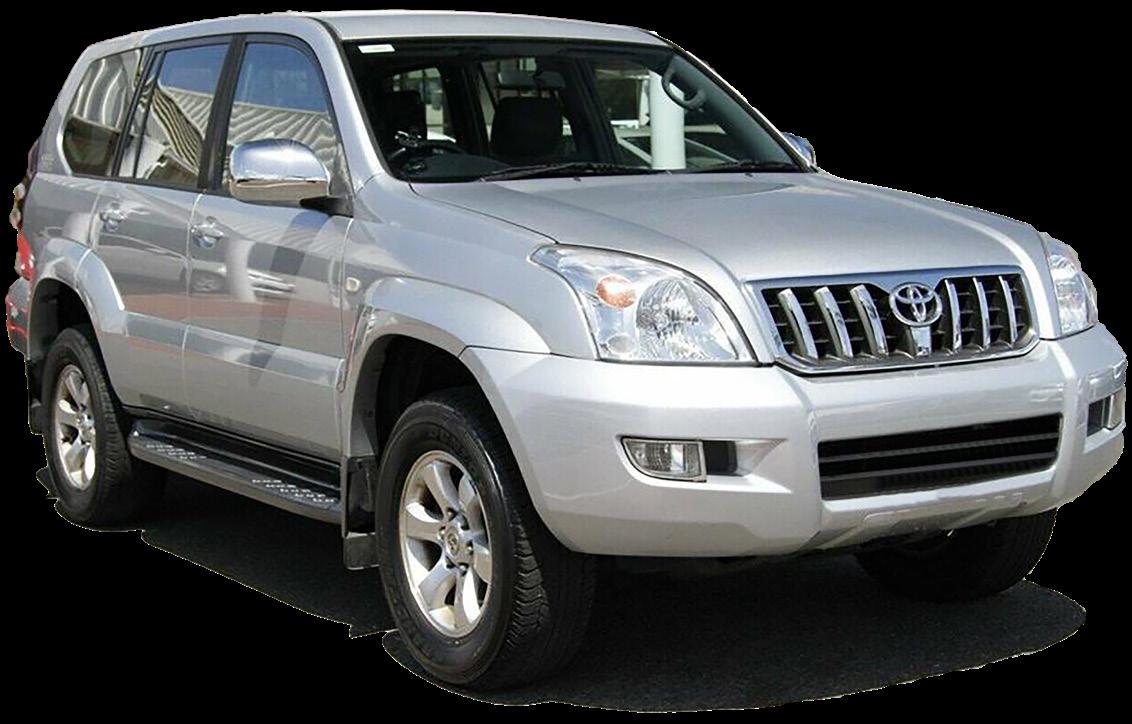
VACC’s Technical Advisory Service has been receiving calls on the operation of the sub-tank systems on Toyota 120 Series Prado. This system is different from the previous model in which the driver had to manually switch from the main to the sub-tank and had two fuel pumps. The 120 Series swaps tanks automatically, however, there are three different systems used depending on which engine is fitted to the vehicle. They all use a jet pump, which is not driven electrically, to transfer fuel from the sub-tank to the main tank, and not in the same way because that would be too easy.
What is a jet pump?
First invented in 1858 by Henri Giffard as a more efficient way to get water into a steam boiler under pressure, this simple device with no moving parts has been used in many applications since then to move fluids from one place to another. They are constructed as a series of cone-shaped nozzles and a tube that is pinched in the middle to make an hourglass shape. It works by taking advantage of the venturi effect. When a gas or fluid is forced to go through a smaller area it must increase it’s speed to pass through the reduced space. As the speed increases it creates a low-pressure area (vacuum or suction) which can be used to draw other gases or fluids into the mainstream (like the carburettor). This is the same principle used in rocket and jet engines, which is
why they are called jet pumps.
In the Prado sub-tank system, and others like it, the fuel that is returning from the fuel rail to the tank is used to power the jet pump. The returning fuel passes through the nozzle and venturi, which in turn draws fuel from the subtank into the main tank. The flow rate of the jet pump is designed to be more than the engine’s fuel consumption. This is so it will drain the sub-tank before the main tank, where the engine’s fuel pickup is located. The advantages of a jet pump over an electric pump are simplicity, low maintenance, lightness, and it’s self-priming and can’t be damaged if they run dry. The disadvantage is that some technicians don’t understand their operation and there is a second fuel filter on some models that is not common knowledge.
Jet pump design
Suction chamber Nozzle
This is the section that is similar to a jet and rocket engine design
As the returning fuel passes through the nozzle and into the venturi it creates a low pressure in the suction chamber which draws fuel from the sub-tank
The second fuel filter
For models with the common rail diesel 3.0-litre 1KD-FTV engine and a sub-tank, there is an electrically driven fuel pump in the main tank just to run the jet pump. The engine has a normal lift pump and filter assembly, like most other diesel Toyotas, under the bonnet. However, there is also a second fuel filter which is only for the electric fuel pump and jet pump. This filter is due for replacement every 20,000km with the main fuel filter. However, this filter is not stated specifically in the service
schedules, so it can be overlooked. If this filter blocks up, the jet pump will not have enough fuel flowing through it to draw fuel from the sub-tank. This filter is located above the rear tail shaft and is an in-line filter.
Other models use the fuel returning from the engine to run the jet pump, so if there are any blockages or kinks in the return lines this may impact the jet pump’s operation. Also, if the system has been dismantled and the hoses are not refitted in the correct positions the jet pump will not work.

Returning fuel flows through the nozzle
Intake from sub-tank

Fuel gauge confusion
The main fuel tank has a 95-litre capacity and the sub-tank holds 85 litres for a total of 180 litres. The fuel gauge on the instrument cluster is used for both tanks. To assist in indicating how much fuel is in the system there is a 90-litre indicator light on the dash.

When the 90-litre light is OFF, and the gauge is on FULL, both tanks are full. When the gauge gets to about the half full mark, the 90-litre light will come ON, and the gauge will jump back up to the full mark, which has been known to cause some owner confusion, but this is the normal operation. So, when the 90-litre light comes ON it means that the sub-tank is empty, and you only have about 90 litres of fuel in the main tank which the gauge will indicate. For fuel system wiring diagrams for the Toyota Prado, log on to VACC MotorTech or call VACC’s Technical Advisory Service.
Venturi
Second fuel filter under the vehicle
Main fuel tank Tailshaft
Thank you Jason Batten from Wangaratta Toyota for these photos
1KZ-TE diesel
With this layout, the returning fuel is passed in a loop through the sub-tank before it returns to the main tank to power the jet pump. It does this to use the heat that the fuel has picked up from the engine to keep the sub-tank warm. Fuel filler pipe
5L diesel
With this layout, the returning fuel passes through the sub-tank before it powers the jet pump. The pump is similar to the 1KZ-TE engine except it faces the other direction, and it pushes the fuel into the main tank.
Sub-tank
Sub-tank
3RZ-FE petrol
This layout has an electric pump to supply the engine and the jet pump is in the main tank.
1KD-FTV Diesel
An electrically driven fuel pump in the main tank pushes fuel out of the tank, then through an inline filter, then back into the main tank to drive the jet pump. The jet pump draws fuel from the sub-tank into the main tank.
1GR-FE Petrol
We are unable to confirm the layout of the system for this engine and sub-tank system combination.
Sub-tank
Becoming a VACC or TACC member opens up a wide range of special offers and discounted products and services for you and your business. VACC and TACC have collaborated with organisations which provide essential services to your business to offer special low rates for members. Couple the savings from discounted products and services with the subsidised services which VACC itself offers to members, and your annual membership can easily pay for itself. Everything from IR advice, to cheaper EFTPOS terminals to technical solutions is on offer. This guide gives you an idea of the offers which you can access, as well as a number of other collaborations.
Workplace/IR Advice
Members can access services including a call centre for employment-related questions, a web page with award rates and policy and employment fact sheets, writing of employment contracts, handbooks and policies, and member and industry representation.
03 9829 1123 ir@vacc.com.au vacc.com.au
Auto Apprenticeships
VACC takes the hassle out of hiring trainees and apprentices, as businesses are matched with high quality candidates who meet strict selection criteria. VACC also looks after all administration aspects of the apprenticeship, including visits by Field Officers.
03 9829 1130 autoapprenticeships@vacc.com.au autoapprenticeships.com.au
Technical Information
Members have access to comprehensive technical information for the automotive industry, including a telephone advisory service (available for a small annual access fee), Tech Online, which contains over 55,000 pages of technical information, and the VACC Times Guide.
03 9829 1186 03 9829 1196 (Tech Online) vacc.com.au
Health Insurance
NIB has a mission and vision of people enjoying better health. VACC and TACC members (including their staff) receive a corporate discount on nib’s retail health insurance products.
1800 13 14 63 nib.com.au/corp/vacc
Website Services
OurAuto Digital provides a one-stop solution for your business’ website, including a custom design, rendering for smartphones and tablets, email accounts and hosting. Businesses are able to update web content themselves. VACC and TACC members receive these services at a discounted rate.
1300 687 288 ourautodigital.com.au
OurAuto iStore
Businesses can purchase a wide range of items, including personalised stationery, consumables such as floor mats and seat covers, workplace safety signage and much more. Member businesses automatically receive a discount on purchases.
03 9829 1152 autoistore.com.au
A Grade
The A Grade Automotive Network is a network of VACC member businesses that are dedicated to providing customers a better quality experience across all aspects of vehicle maintenance and repairs. Participants are contractually bound and VACC certified, and are publicly promoted in various forms of advertising.
03 9829 1202 goagrade.com.au
Technical Solutions
Technical information is available to all automotive businesses through the OurAuto Tech-Centre. Subscription includes access to Tech-Online and the Times Guide, Tech-Advisory phone services, and the Tech Talk publication. The Centre uses the largest technical library in the Southern Hemisphere.
1300 687 288 tech-centre.com.au
EFTPOS Facility
Commonwealth Bank offers competitive financial solutions for businesses in the automotive industry. VACC and TACC member businesses can access a discounted rate for EFTPOS merchant facilities. Contact VACC for an application form.
03 9829 1152 vacc.com.au
Training & Education
Members can access automotive industryspecific training programs in business management, industrial relations/human resource management, technical and OHS & Environment. Skills Development Centre also facilitates short courses, online programs and diploma and degree qualifications.
03 9829 1130 info@vaccsdc.com.au vaccsdc.com.au
Freight Services
VACC and TACC members receive discounted rates and benefits, including trace and track capabilities, one number to call, one easy-to-understand invoice, and online job quoting, booking and tracking. Contact VACC for an application form.
03 9829 1152 vacc.com.au
Environmental Advice
VACC members can benefit from environmental compliance advice, briefings, training and on-site assessments. Green Stamp is an accreditation program that recognises and promotes businesses which have implemented sound environmental practices.
03 9829 1117 environment@vacc.com.au greenstampplus.com.au

Superannuation
MTAA Superannuation is the super fund for the automotive industry. MTAA has low fees, is run only to benefit members and offers a range of investment options. It allows employers to make all super contributions with just one transaction.
1300 362 415 mtaasuper.com.au
Energy Bill Savings
Smart Power offer a free bill comparison service. It will enable you to evaluate your current energy bills. They will do a comparison with VACC’s approved electricity providers. Contact VACC for an application form.
03 9829 1152 vacc.com.au
Waste Management
Remondis Australia is VACC’s preferred provider of general and prescribed waste services. VACC members benefit from a customised waste management plan and discounted rates.
03 9829 1152 vacc.com.au
Visa Checking Services
VACC Helpline offers a quick visa checking service through the Department of Immigration. VACC members and non-members can access the service to ensure an applicant on a Visa has appropriate work rights in Australia. Don’t be caught out.
03 9829 1133 autoadvice@vacc.com.au vacc.com.au
JobFinder Services
VACC Helpline provides a free job advertising service on the JobFinder website. Any automotive business, VACC member or not, can advertise qualified and apprenticeship vacancies. All enquiries go direct to you for screening.
03 9829 1133 autoadvice@vacc.com.au vacc.com.au
OH&S Services
Members can access consultation and advice on OHS issues, including incident management, policies, workers’ compensation and more. OHS specialists provide workplace assessments and training, and administer the HazCheck management system.
03 9829 1138 ohs@vacc.com.au vacc.com.au

Payment Plans
GoPay allows your customers to spread out the cost of their service and repair bill. They pay one-third on the day and the balance over the next two months interest-free.
1300 467 292 gopay.com.au
Office Supplies
Winc offers a convenient single source for business and workshop supplies. VACC and TACC members have access to discounts on WINC supplies. Contact VACC for an application form.
03 9829 1152 vacc.com.au
Apprentice Support
VACC Helpline provides apprentices and businesses a free automotive apprenticeship signup and advisory service to assist all parties at any time. With years of experience and knowledge, it’s well worth a quick phone call to put you in the right direction.
03 9829 1133 autoadvice@vacc.com.au vacc.com.au
Australian Automotive
Members automatically receive Australian Automotive magazine. The bi-monthly publication offers the latest industry news, reviews, industry comment and technical articles. Australian Automotive is the most widely read automotive industry publication in the country.
03 9829 1247 australianautomotive.com

Auto Workplace Assist
A convenient go-to solution for supporting automotive workplace compliance needs. Health and Safety can be a complex, high risk and costly area for workplaces. AWA offers ready-made, industry-specific compliance products, so that business owners can get on with the job at hand.
1300 585 136 autoworkplaceassist.com.au
TACC
Founded in 1930, TACC serves the automotive industry in Tasmania and amalgamated with VACC in 1999. TACC members gain access to all of the same products and services as VACC members, however TACC also has a number of additional services for its membership.
03 6278 1611
tacc.com.au
Insurance Brokers
TACC members can now access business insurance solutions through OurAuto Insurance. Specifically designed to meet to the unique risk profile of the automotive industry, OurAuto Insurance can help your business access the best cover at an affordable rate.
1300 441 474 ourautoinsurance.com.au
Graphic Design
VACC’S Marketing department can assist members with their graphic design requirements at a subsidised rate. Services include business cards, logo re-designs, corporate image overhauls, brochures and advertisements.
03 9829 1189 creativeservices@vacc.com.au
Advertising
All members have access to advertising in VACC publications at preferential rates, including Australian Automotive with a national readership exceeding 20,000. The VACC marketing department can help members by designing advertisements at a heavily subsidised rate.
Matt Healey 0407 343 330 matt.healey@cameronmediasales.com
VACC Update
All VACC and TACC members receive VACC Update on a monthly basis via email, with issues also available on the VACC website. The publication provides the latest news and information regarding workplace and industrial relations, OHS and environment, business obligations and training opportunities.
03 9829 1123 vacc.com.au
Tech Talk
Included in VACC/TACC membership is a subscription to the Tech Talk publication, the premier technical publication of the VACC Technical Services Department since 1986. The journal is printed 11 times a year, while a back-catalogue of articles is available as part of the Tech Online website.
03 9829 1292 vacc.com.au

Test and Tagging
ETCS offers TACC members electrical service state-wide, including installation, testing and tagging, and assisting with OHS requirements. TACC members can access special member rates.
1300 724 001
ects.com.au
TACC Apprenticeships
TACC takes the hassle out of hiring trainees and apprentices, as businesses are matched with high quality candidates who meet strict selection criteria. TACC also looks after all administration aspects of the apprenticeship, including visits by Field Officers.
03 6278 1611
tacc.com.au
Roadside Help
TACC members who want to reward their loyal customers can do so though TACC’s Roadside Help program. Members purchase vouchers to give to customers, which customers can use for free help for a flat battery, tyre change, fuel or a tow back to the member’s business.
03 6278 1611 tacc.com.au
TACC Accreditation
TACC Accredited Repairers are promoted to the community as a group of professional businesses who deliver high quality repairs and services. Participating members enter into a contract with TACC to deliver a more professional level of service. TACC promotes these members.
03 6278 1611
tacc.com.au



Really easy to use
Consumers pre-approved at $1500


Online paperless system with Real Time credit approval process that takes less than a few minutes

3 x easy interest free payments for consumers Payments to members within 7 days
An easy way to pay



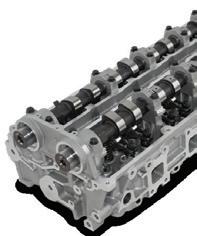



• Does your workshop need more leads and customers?



